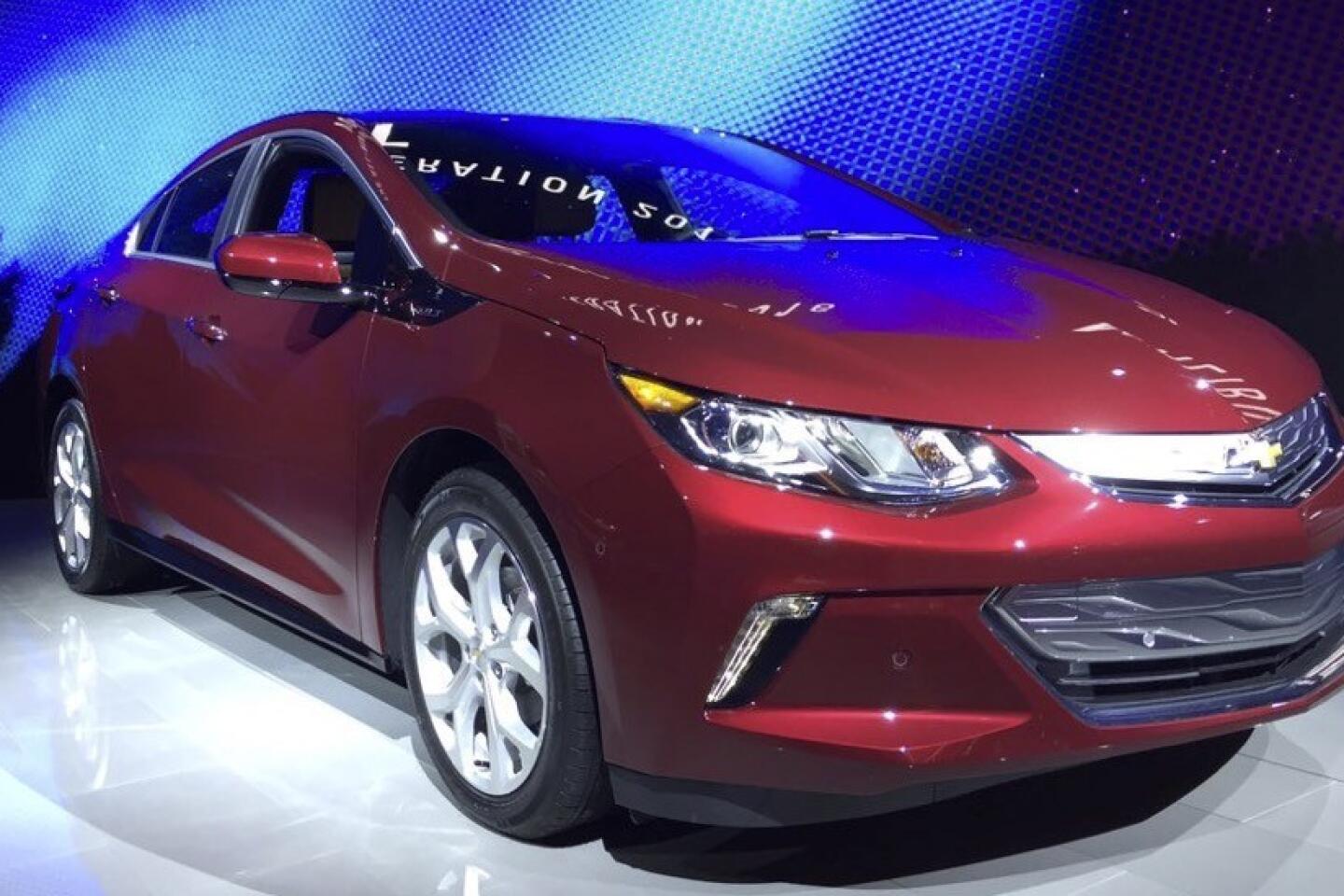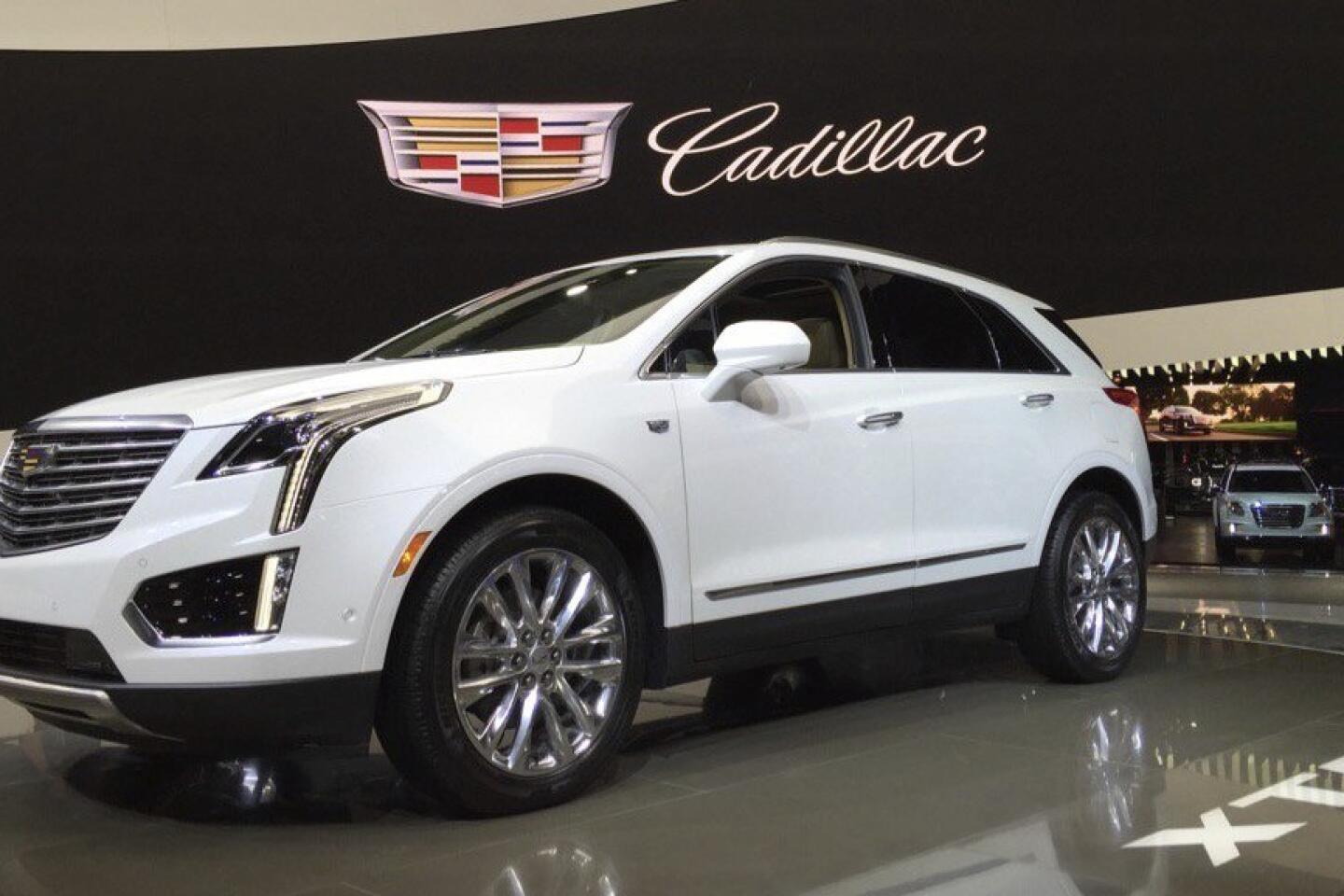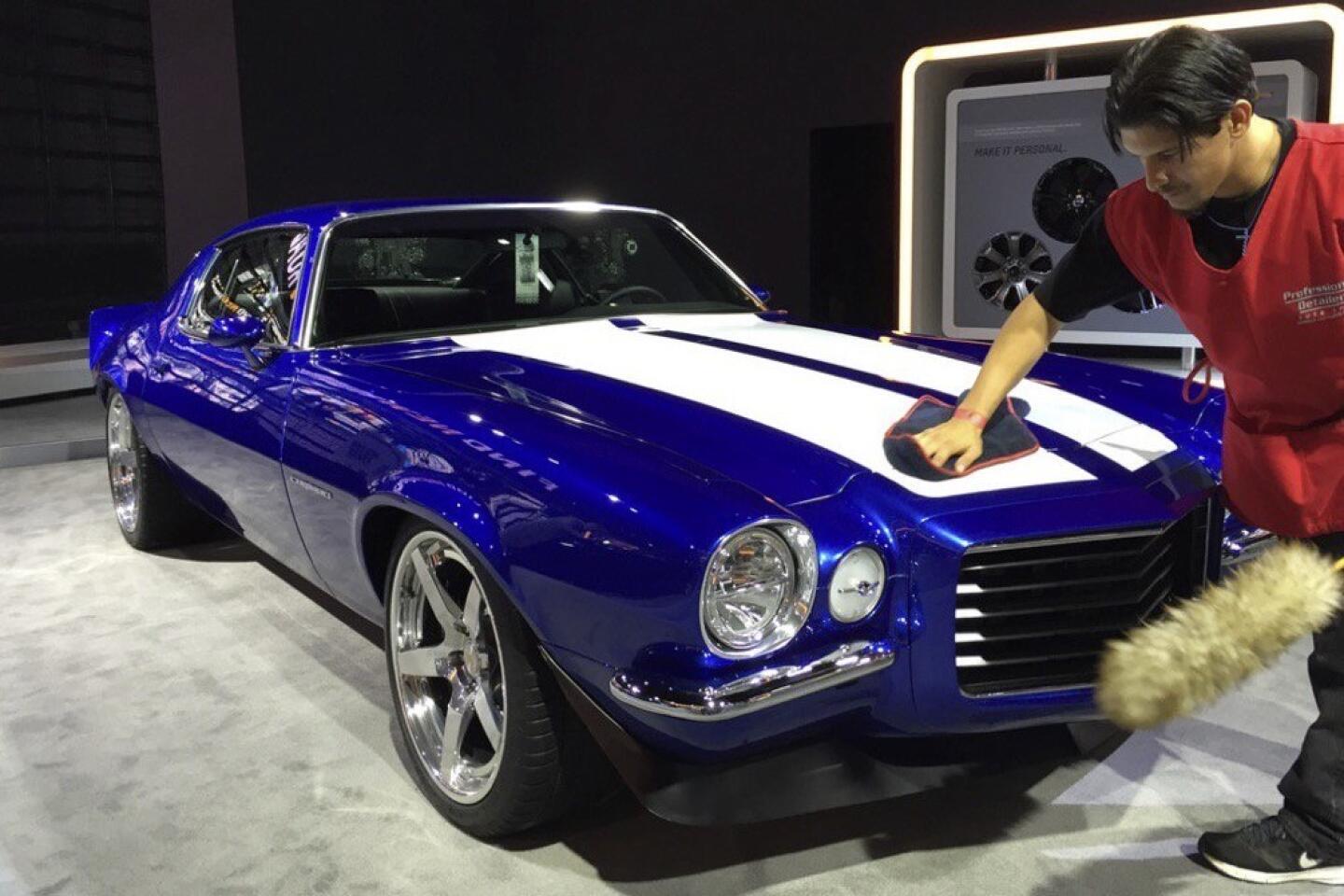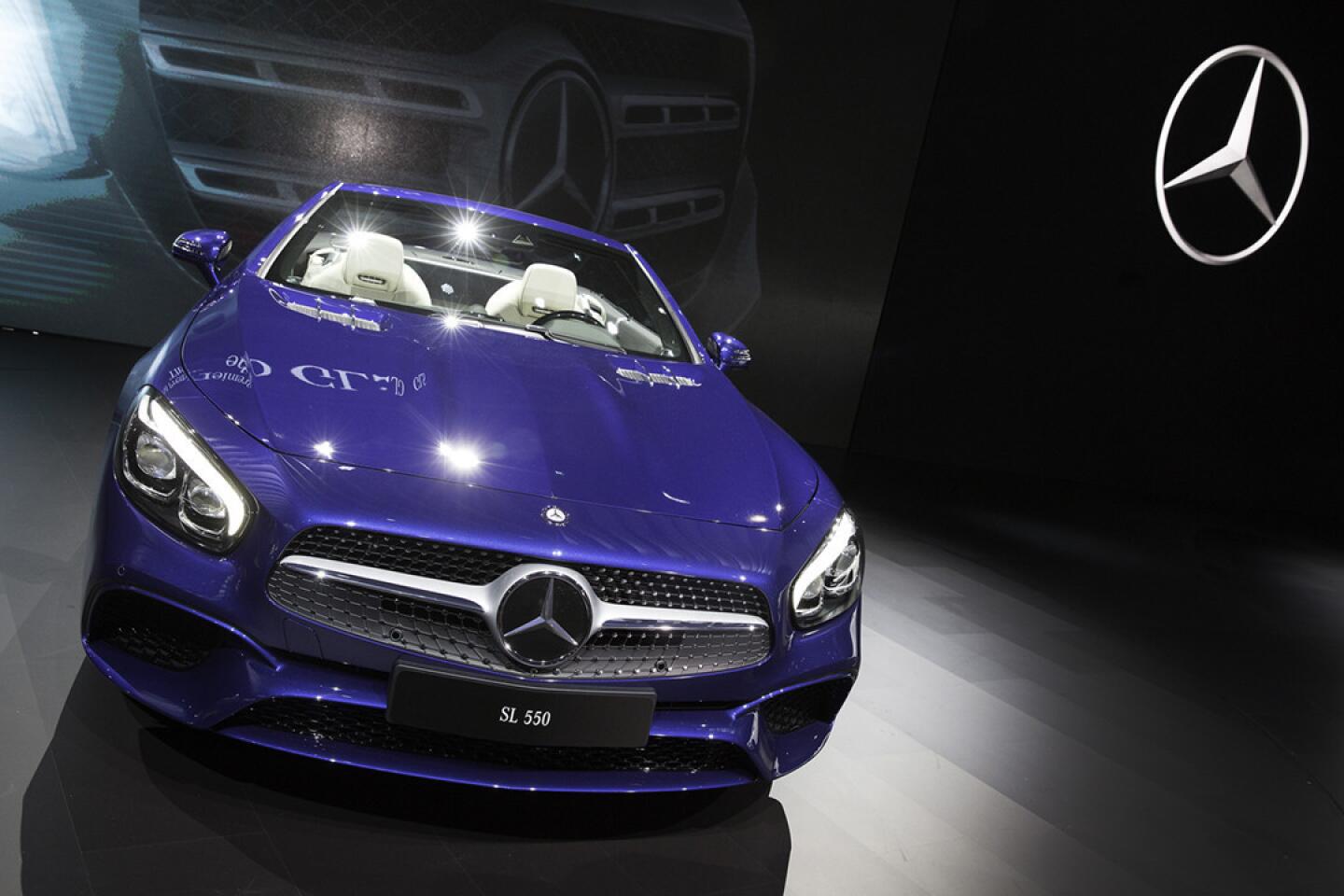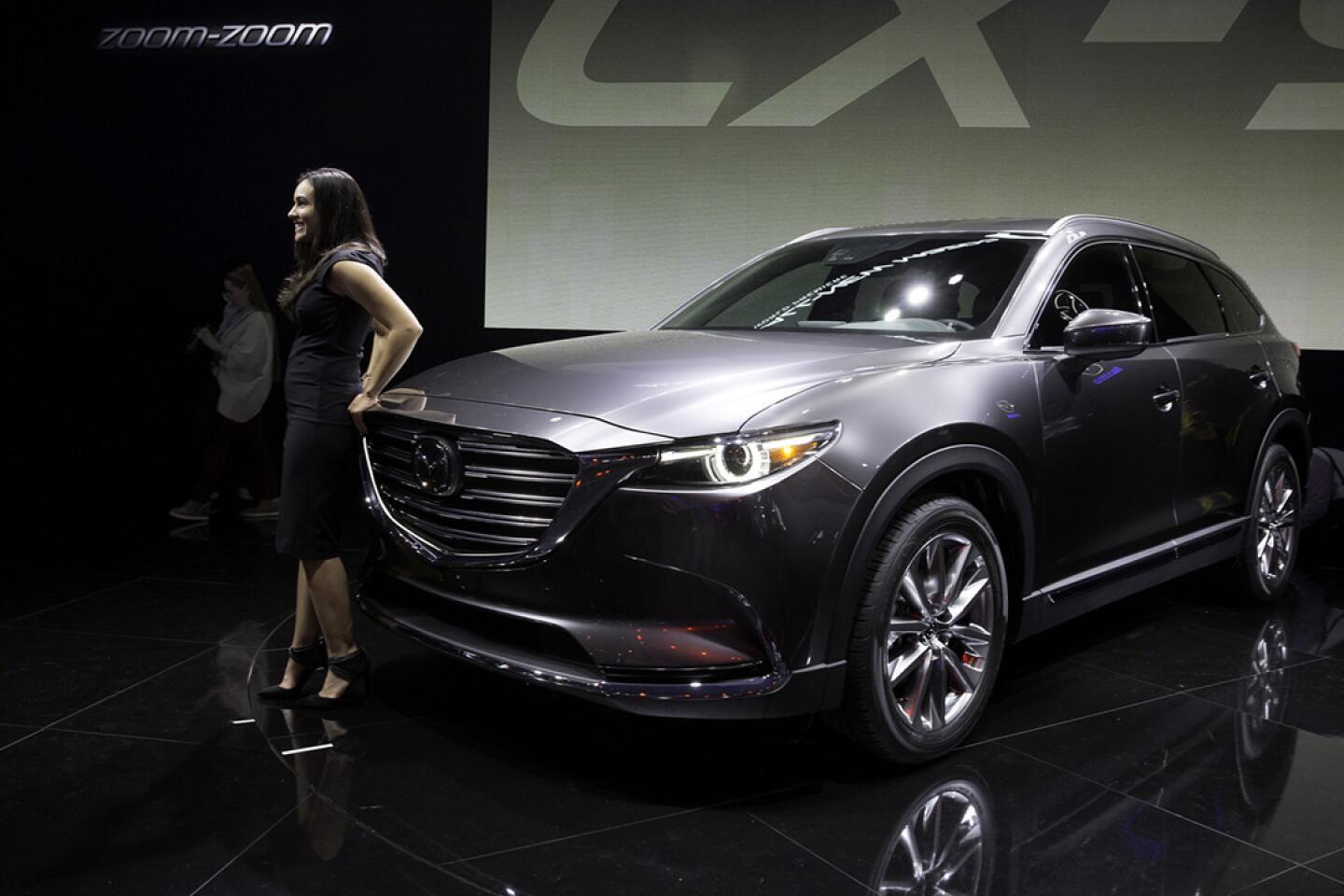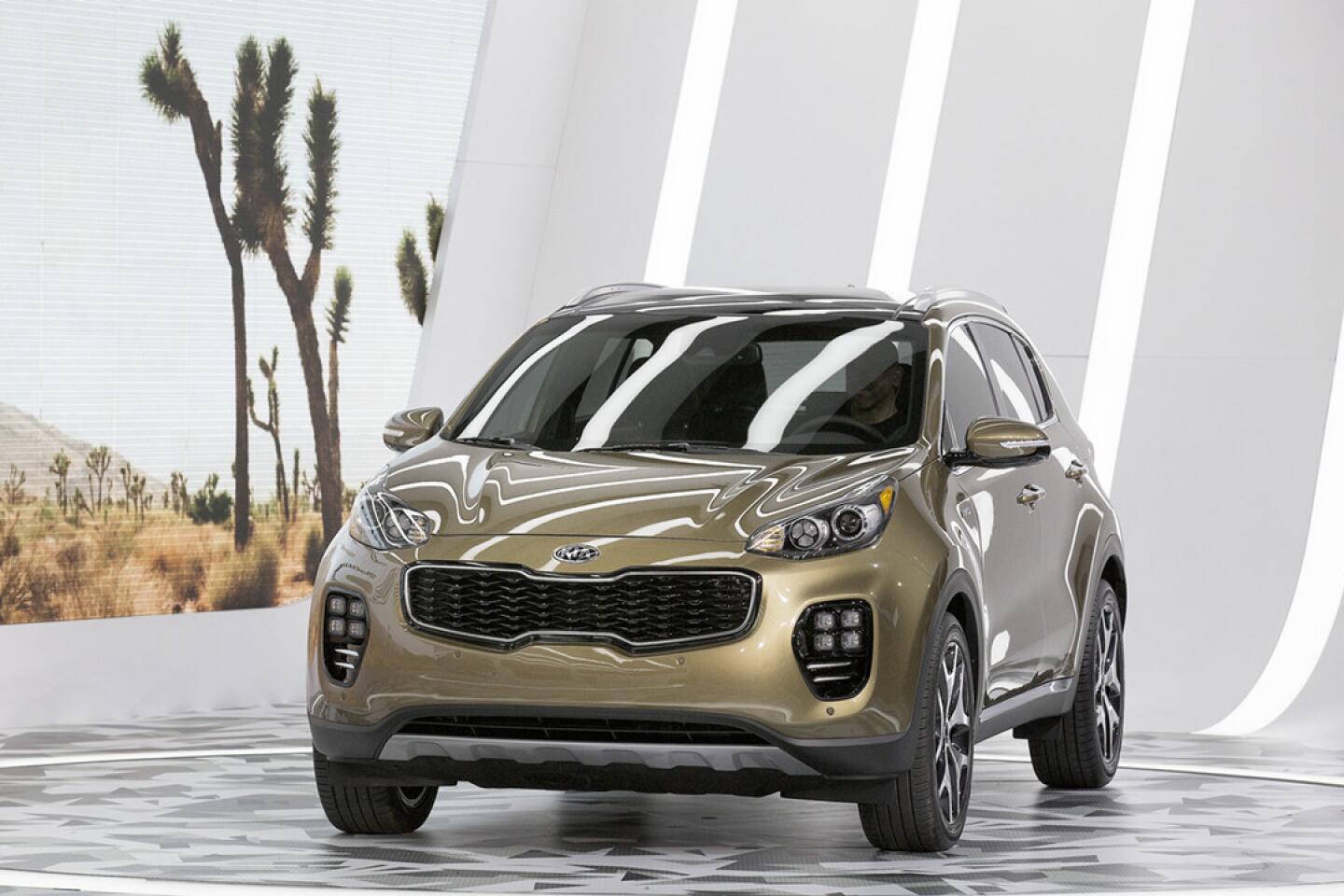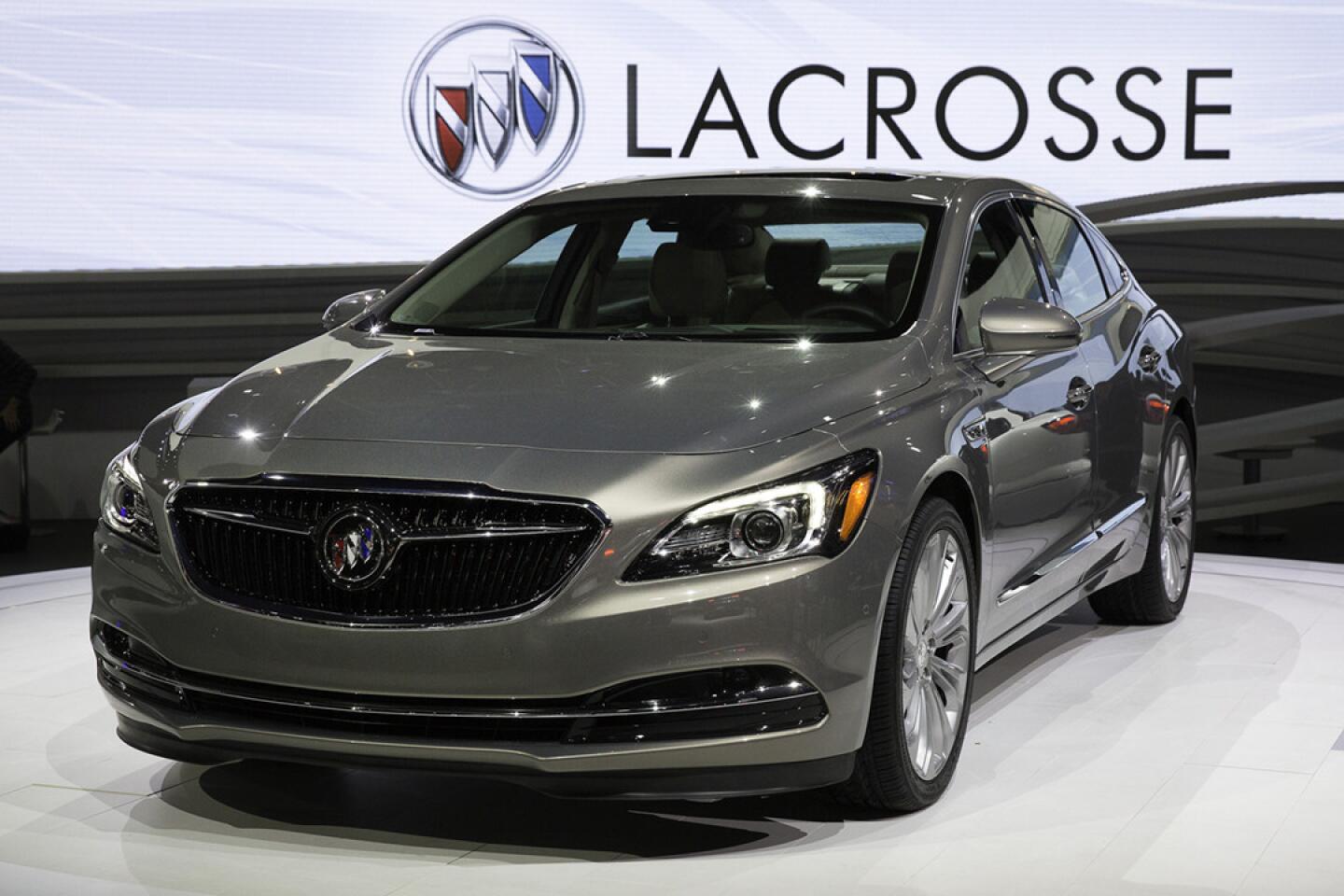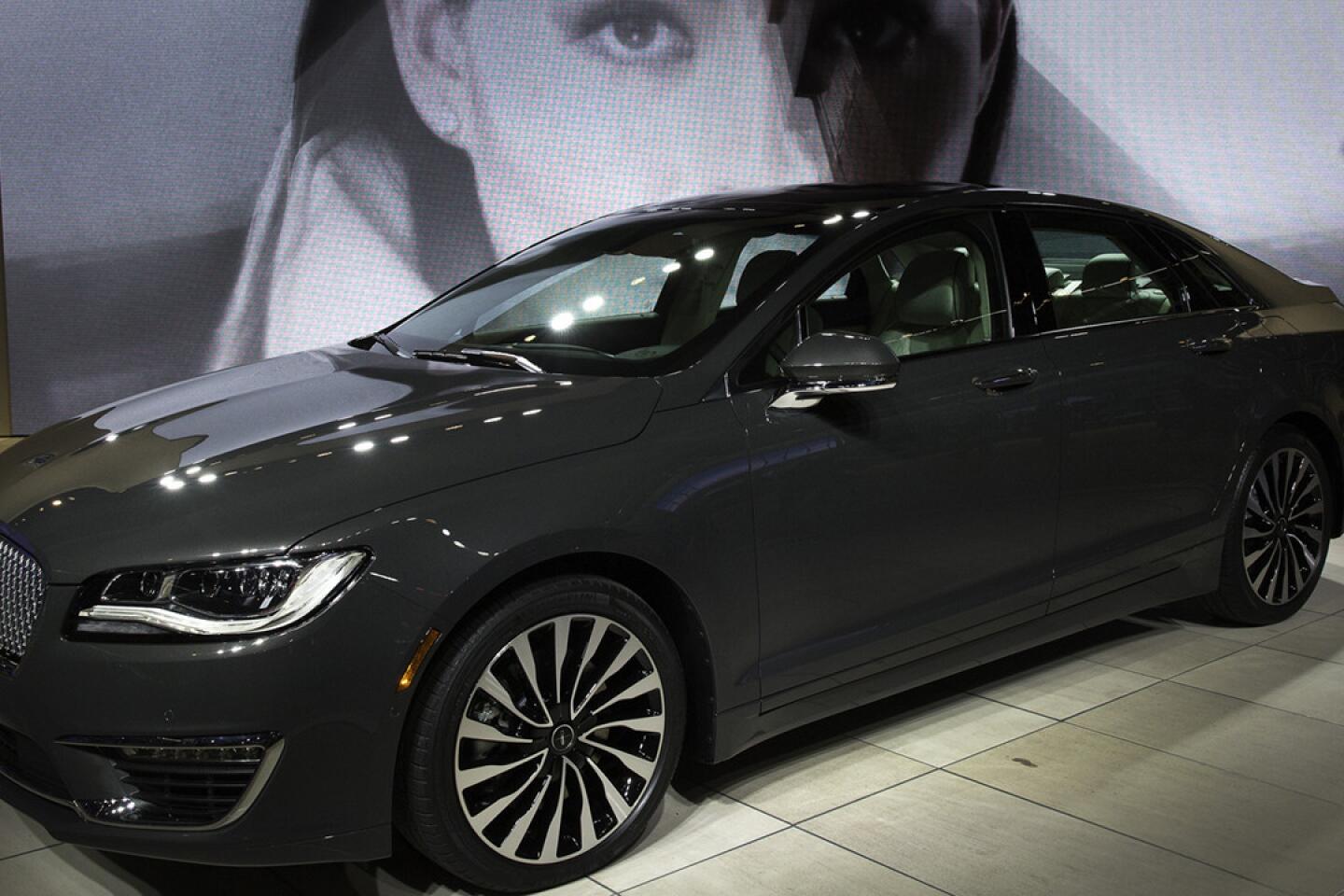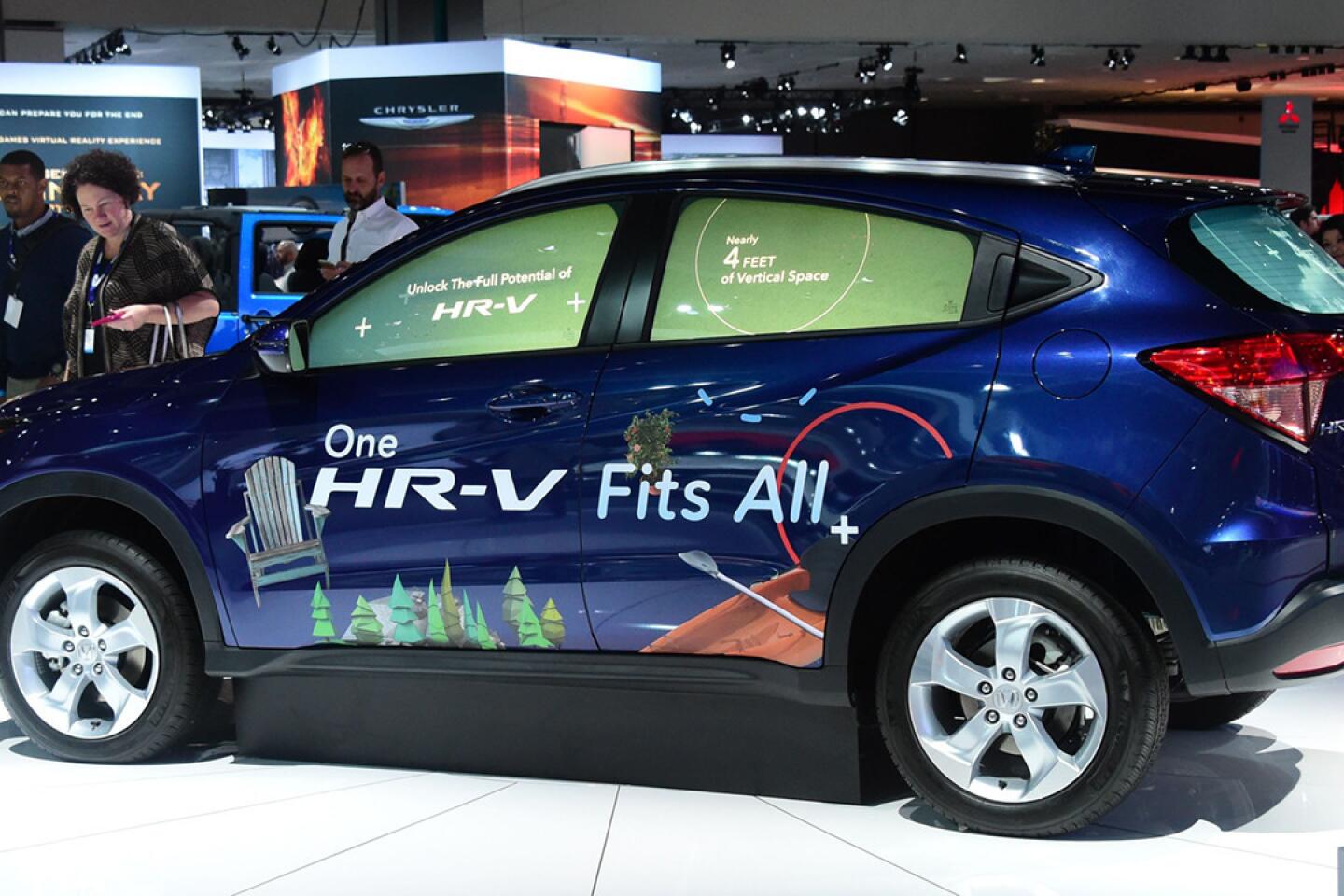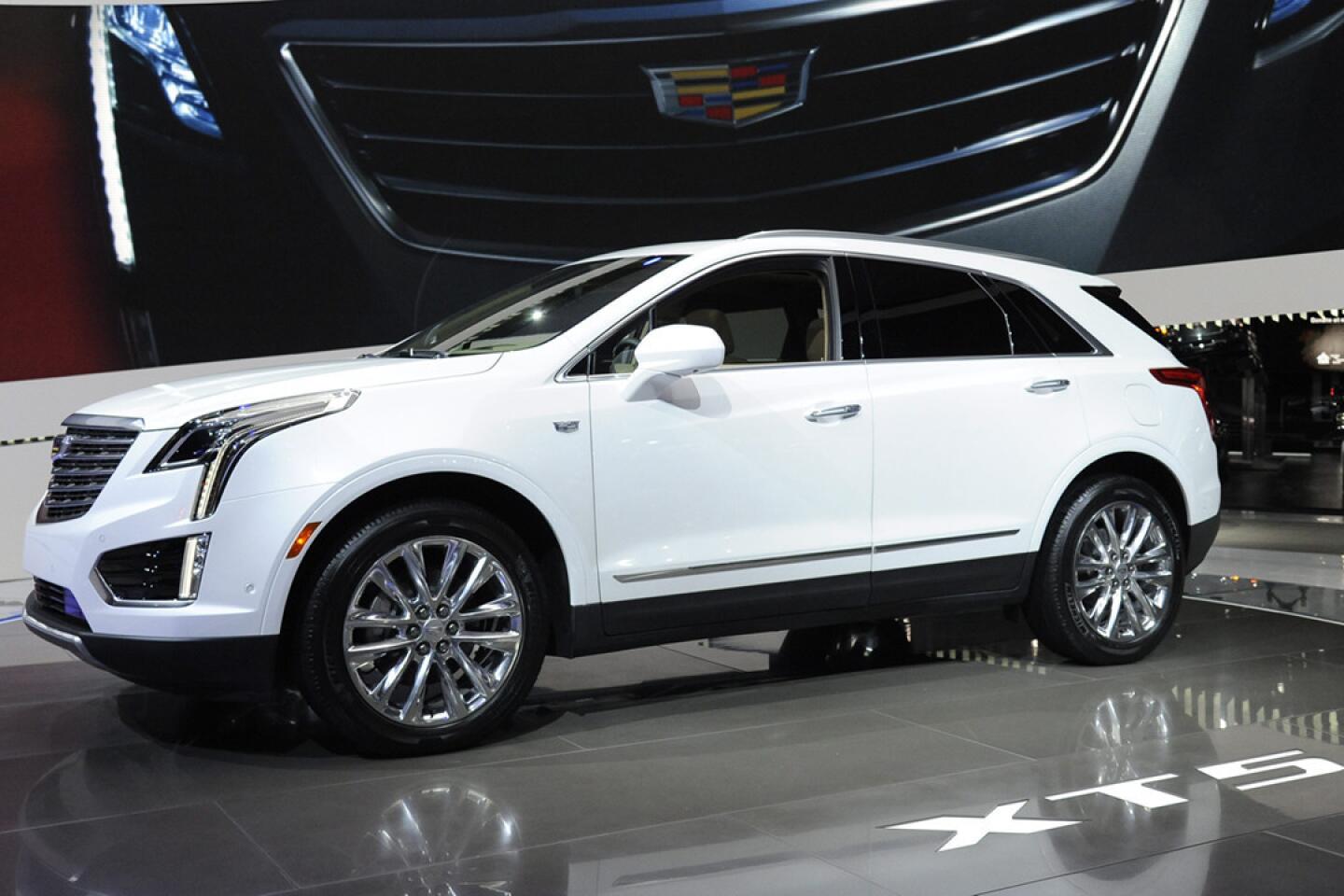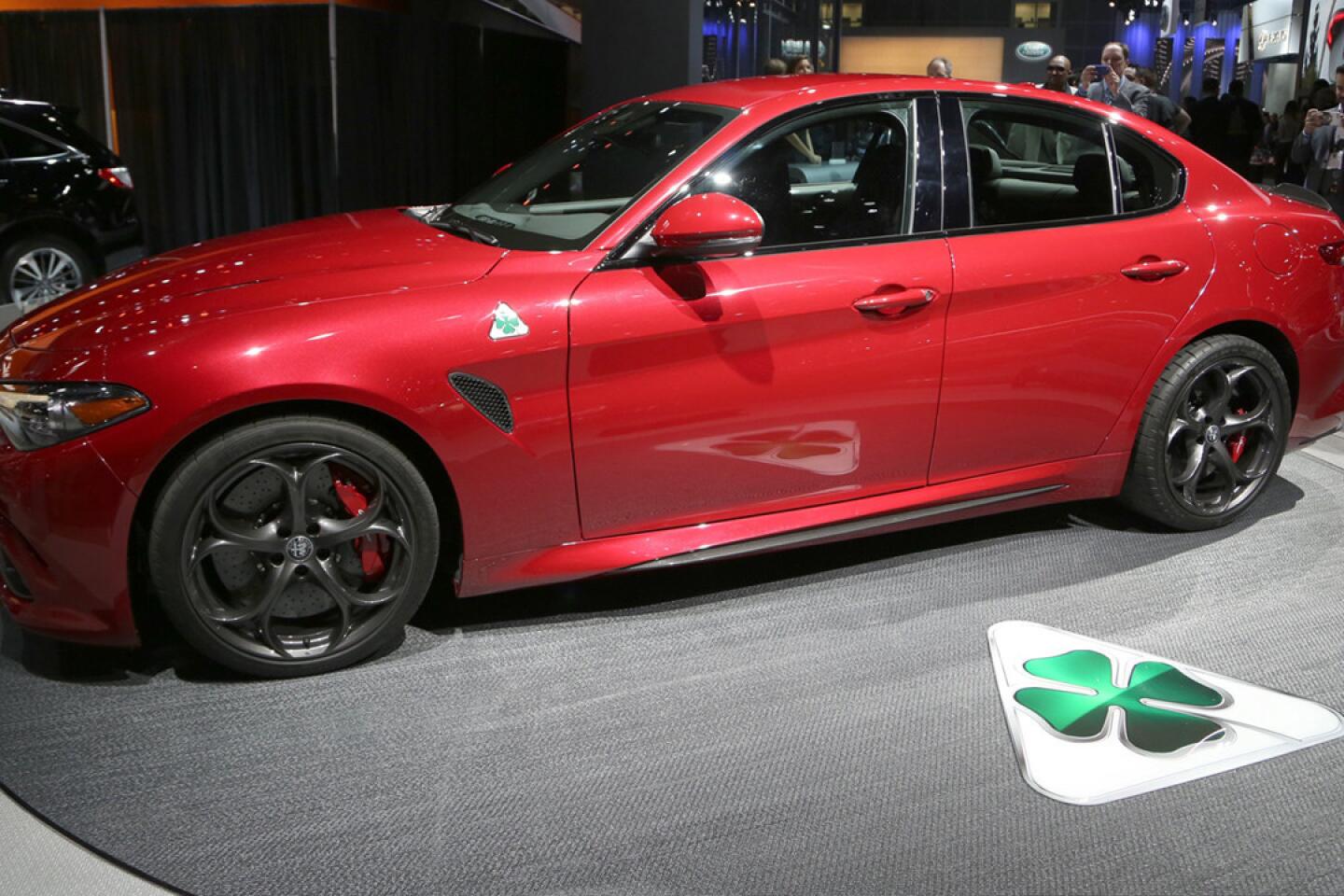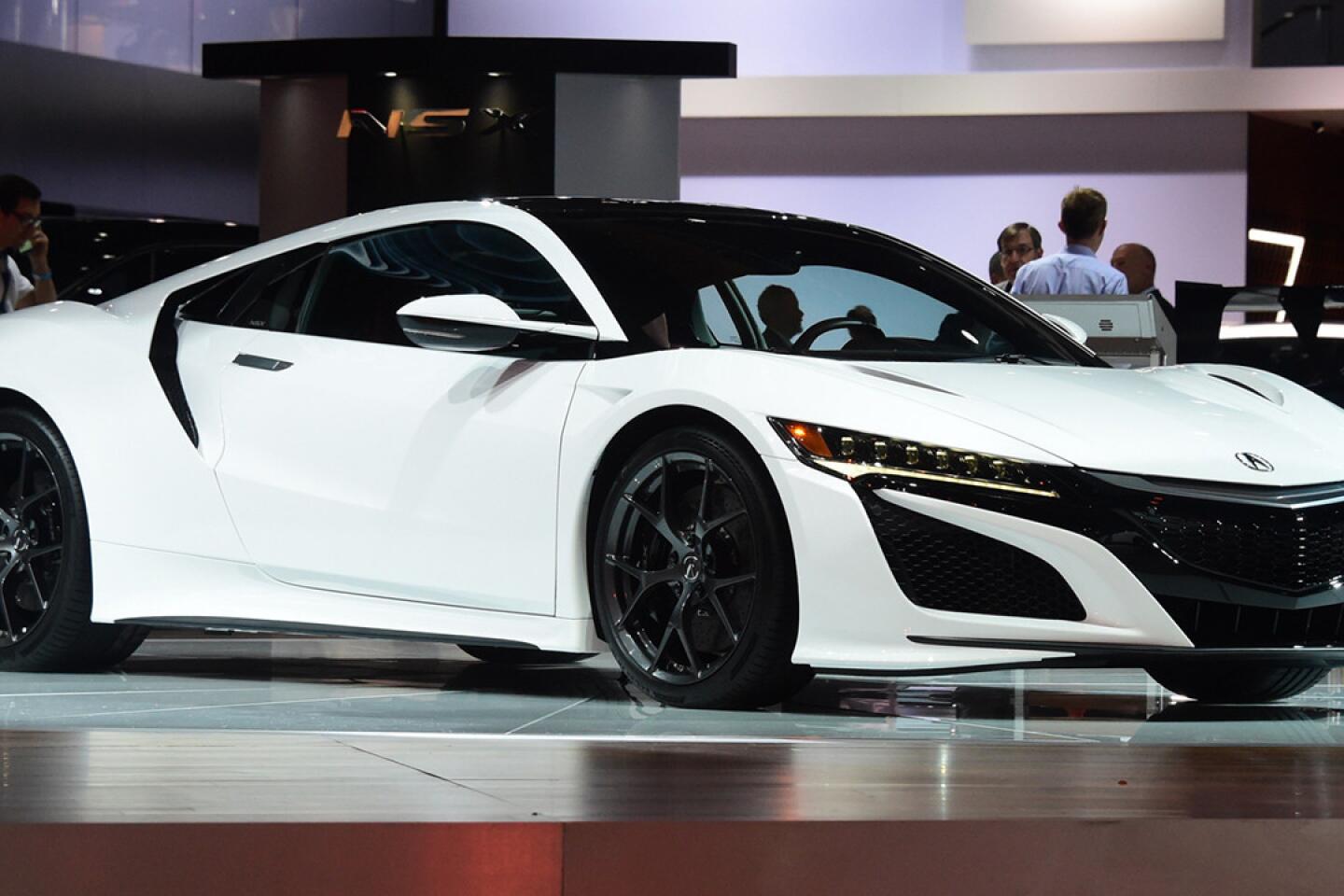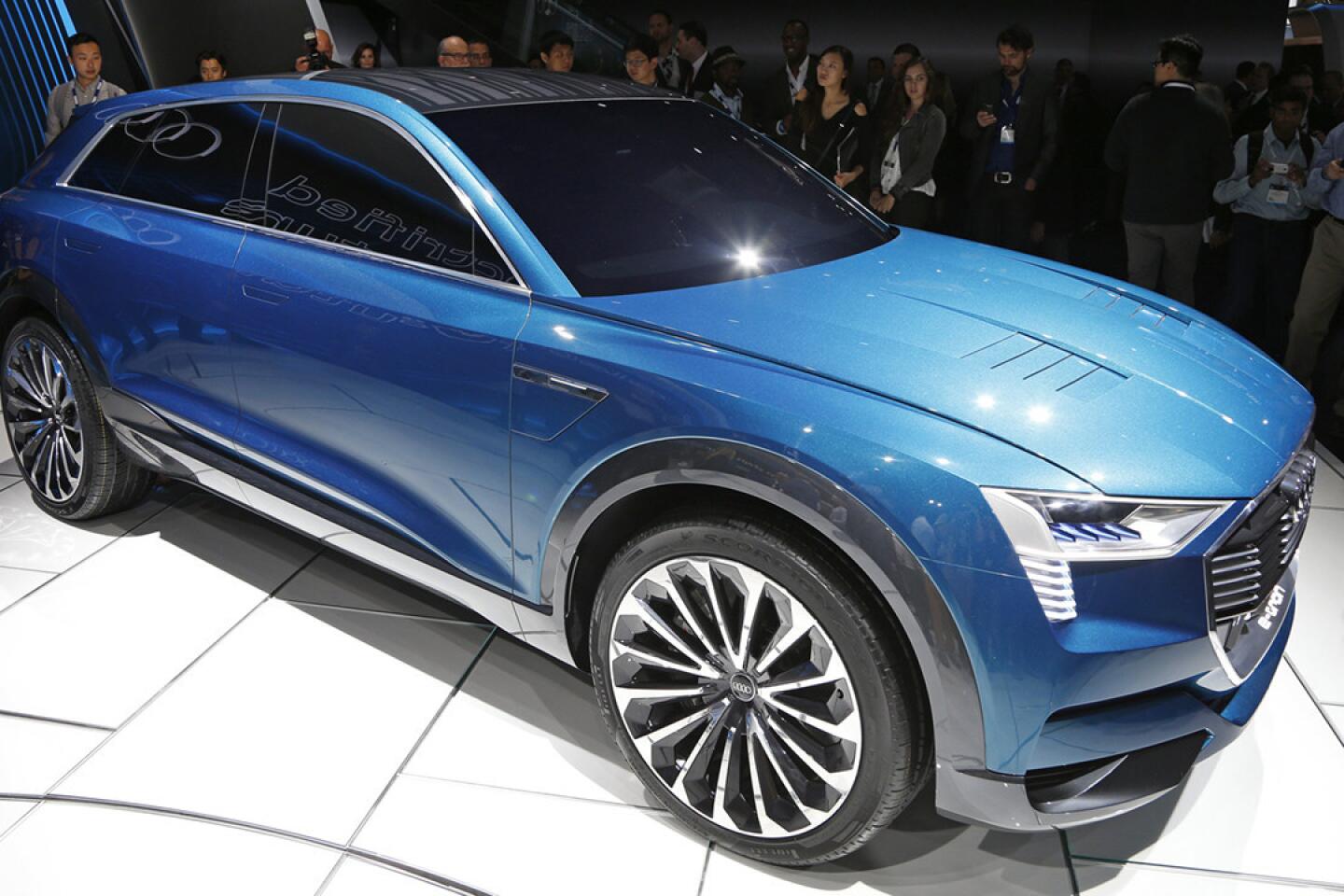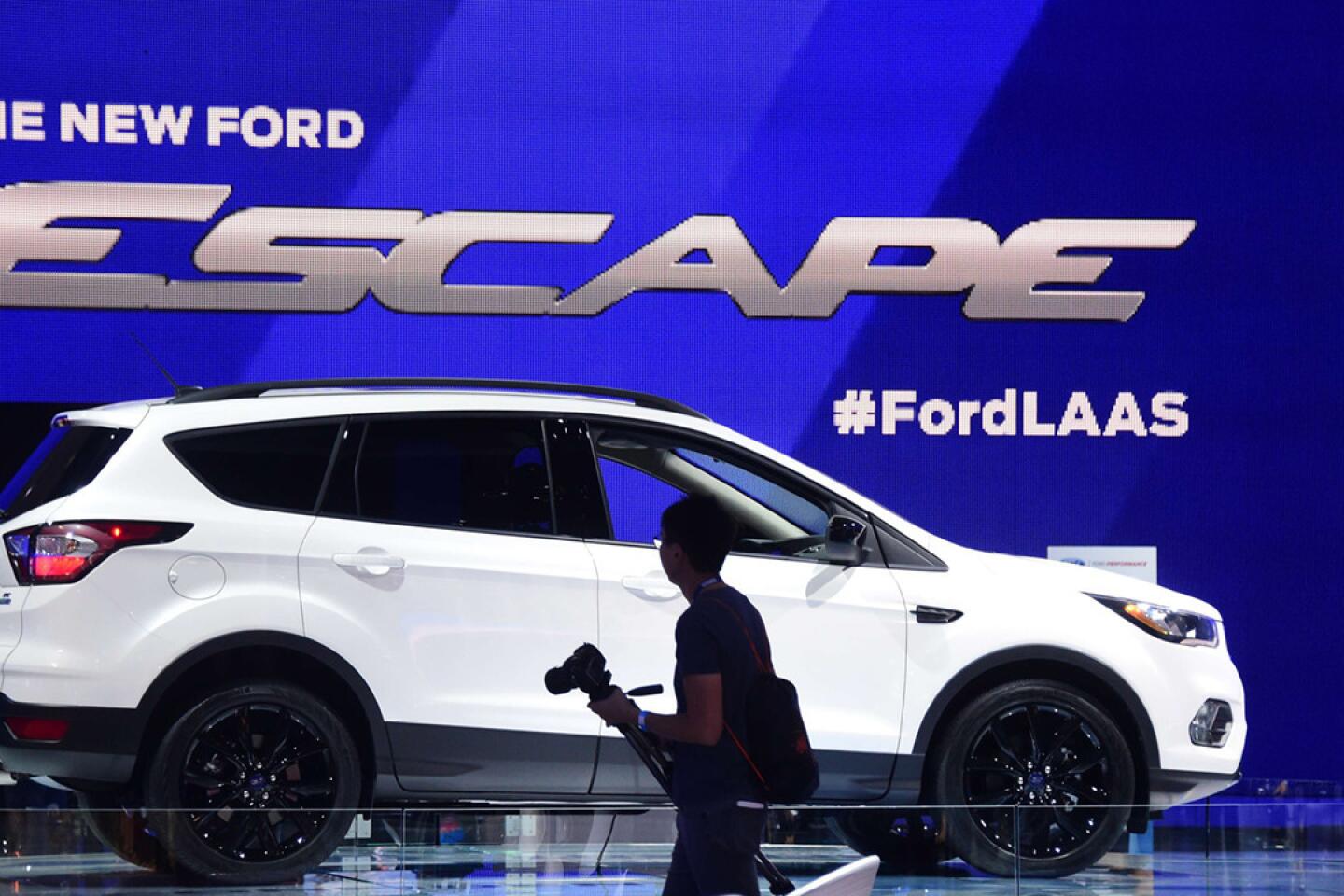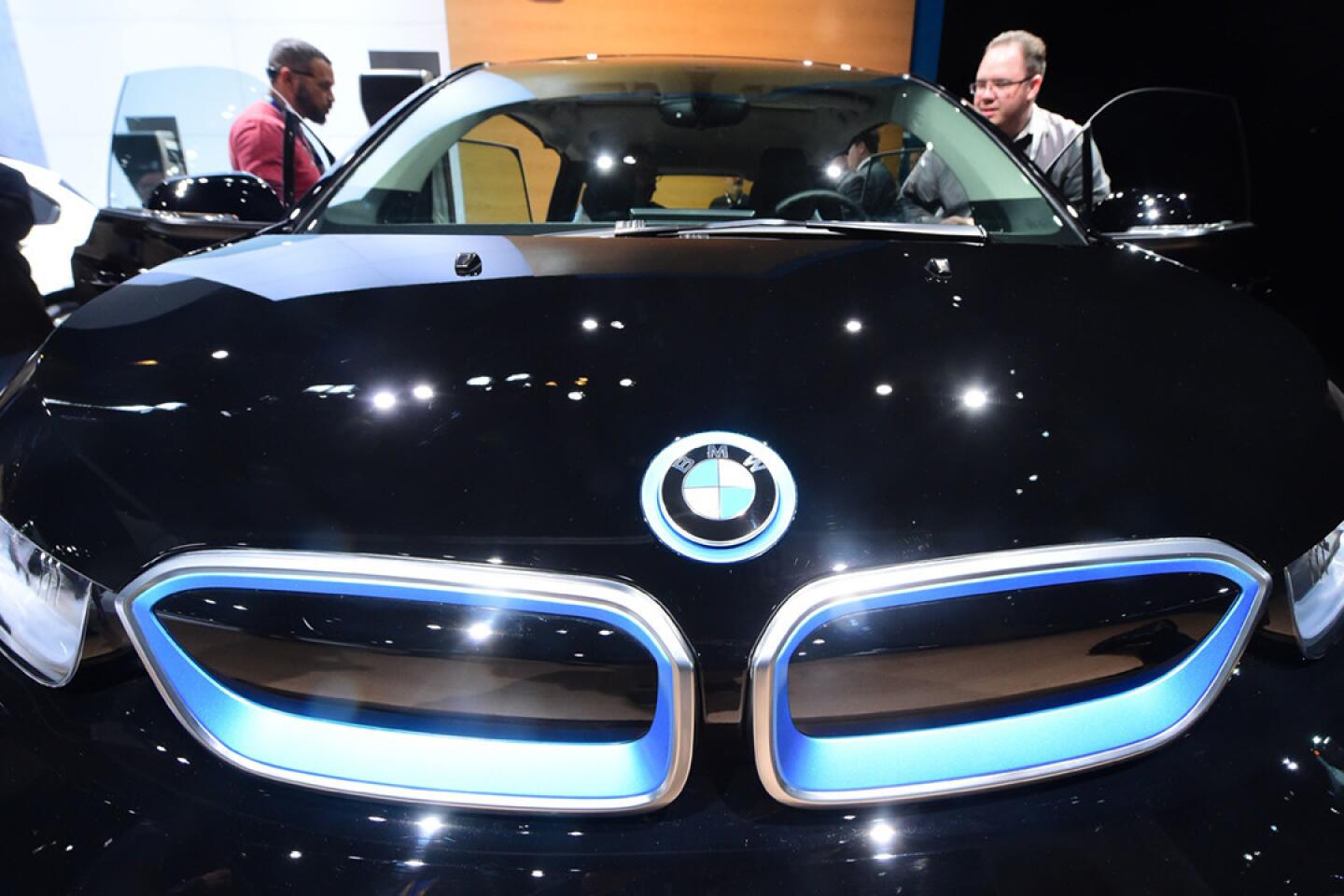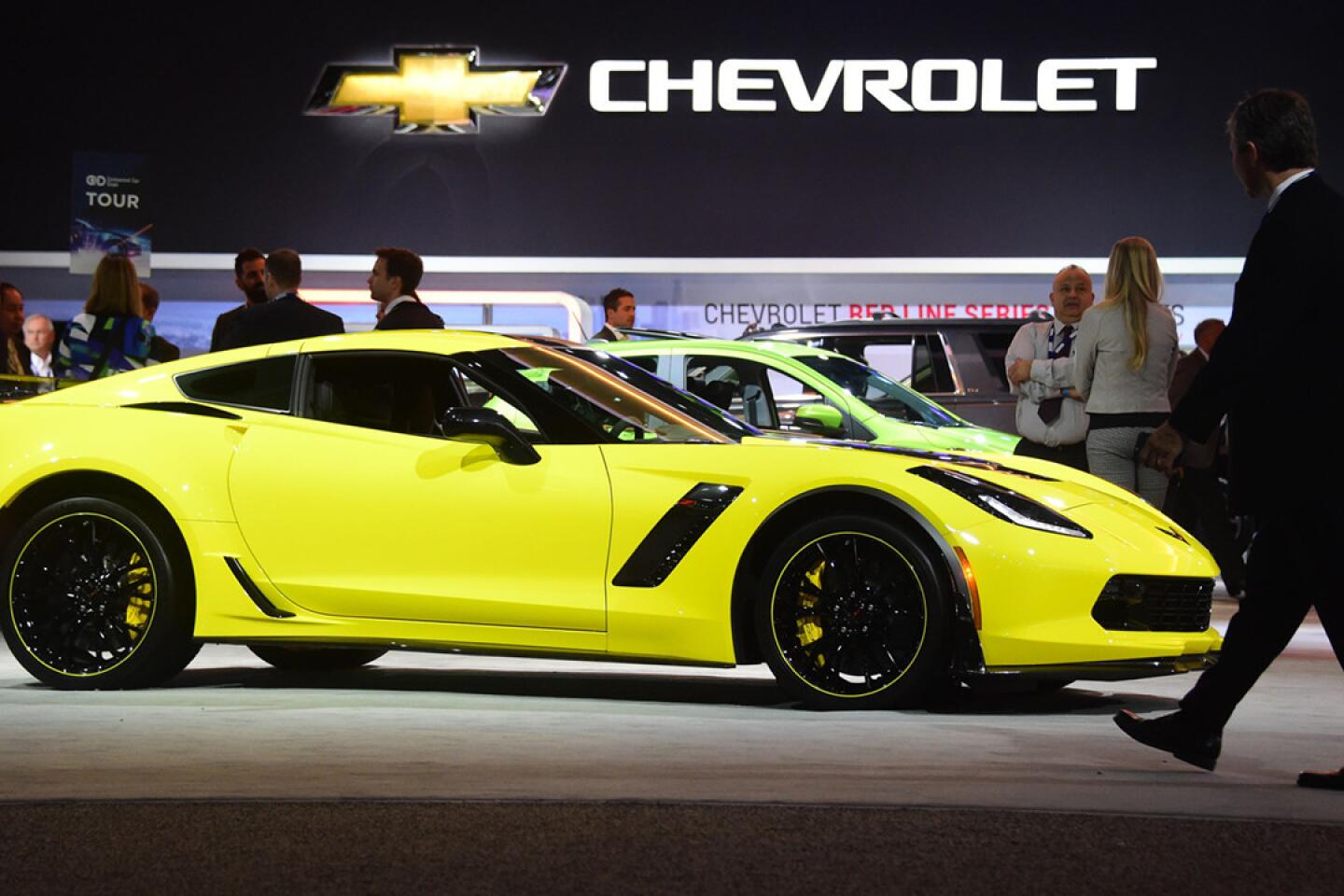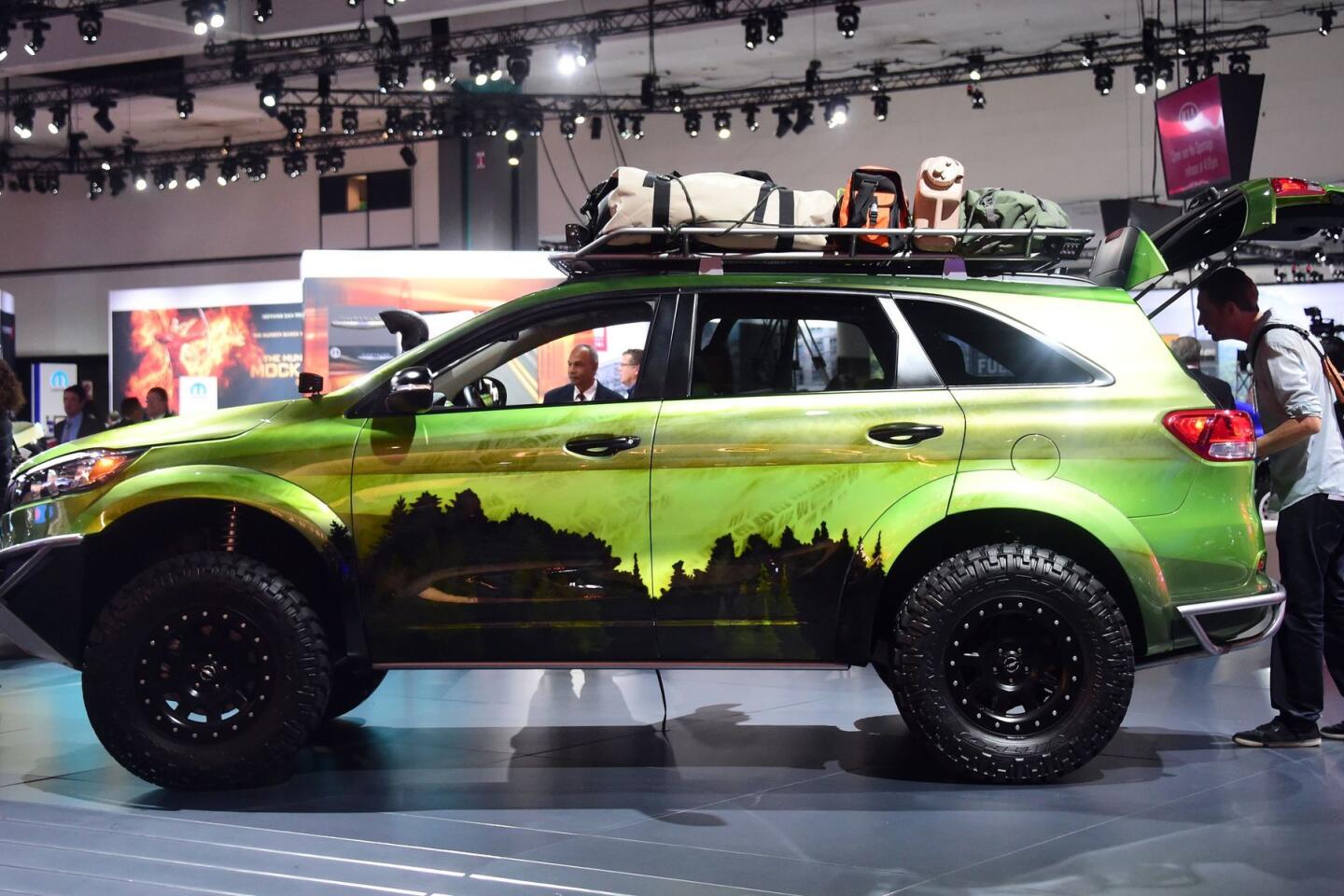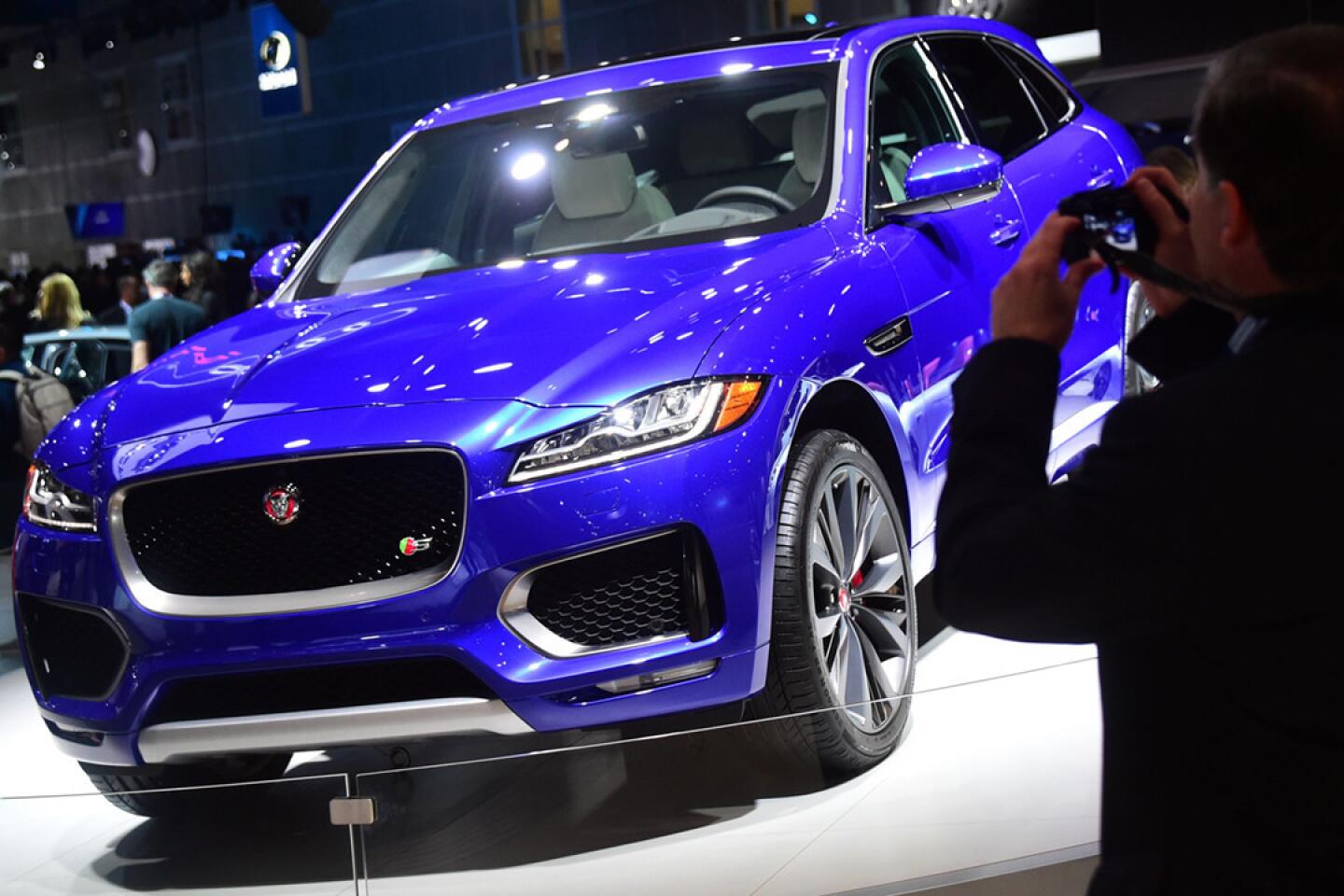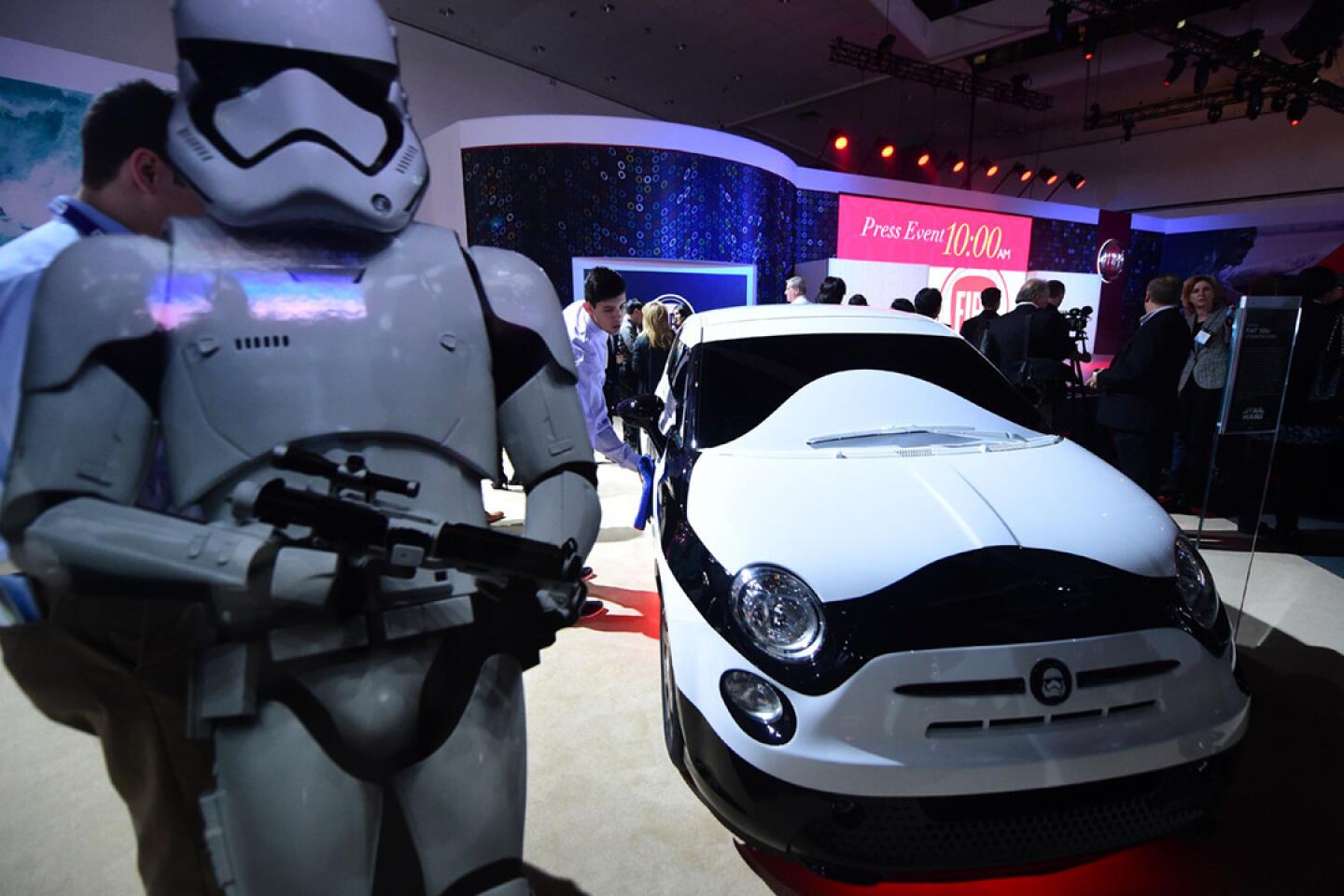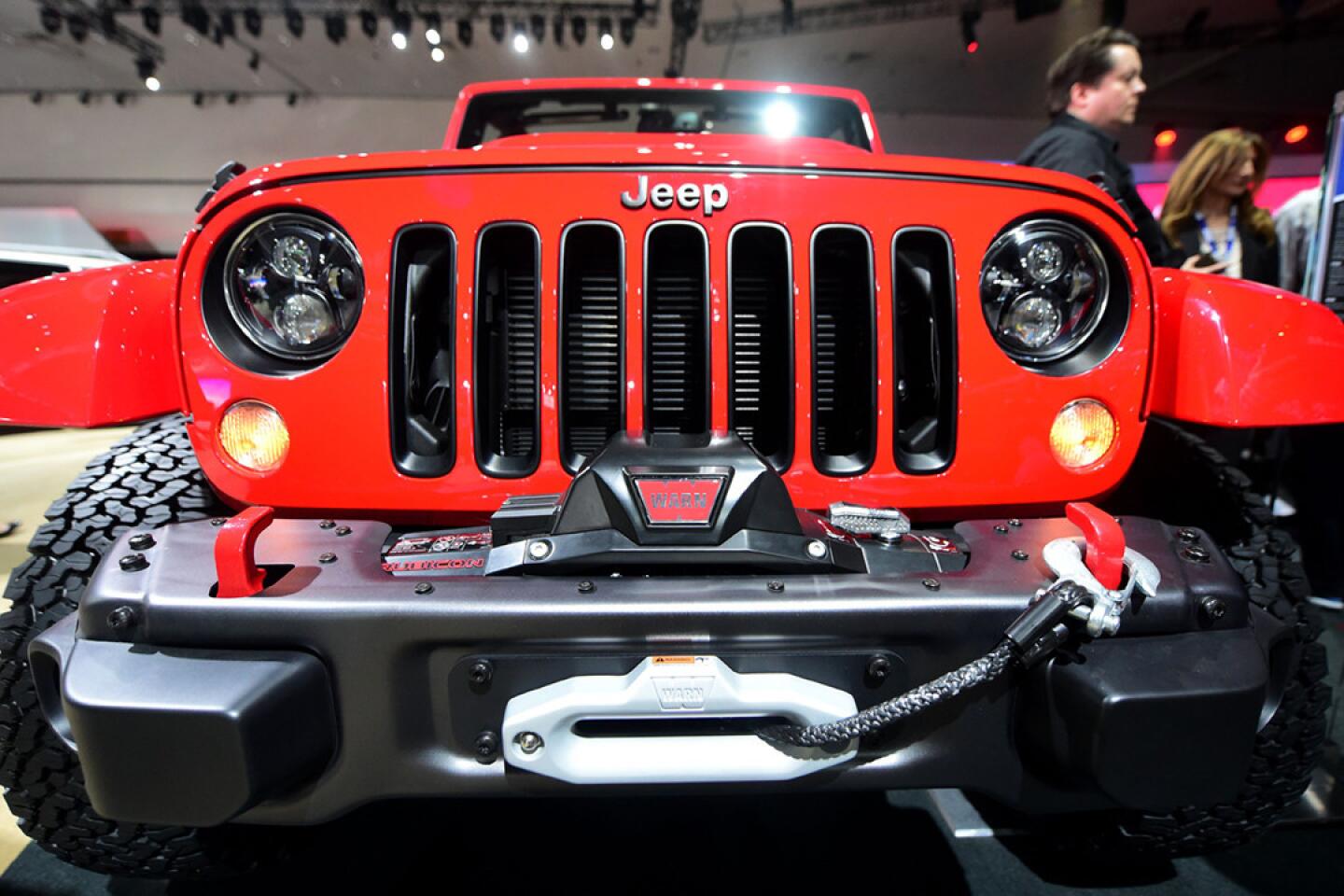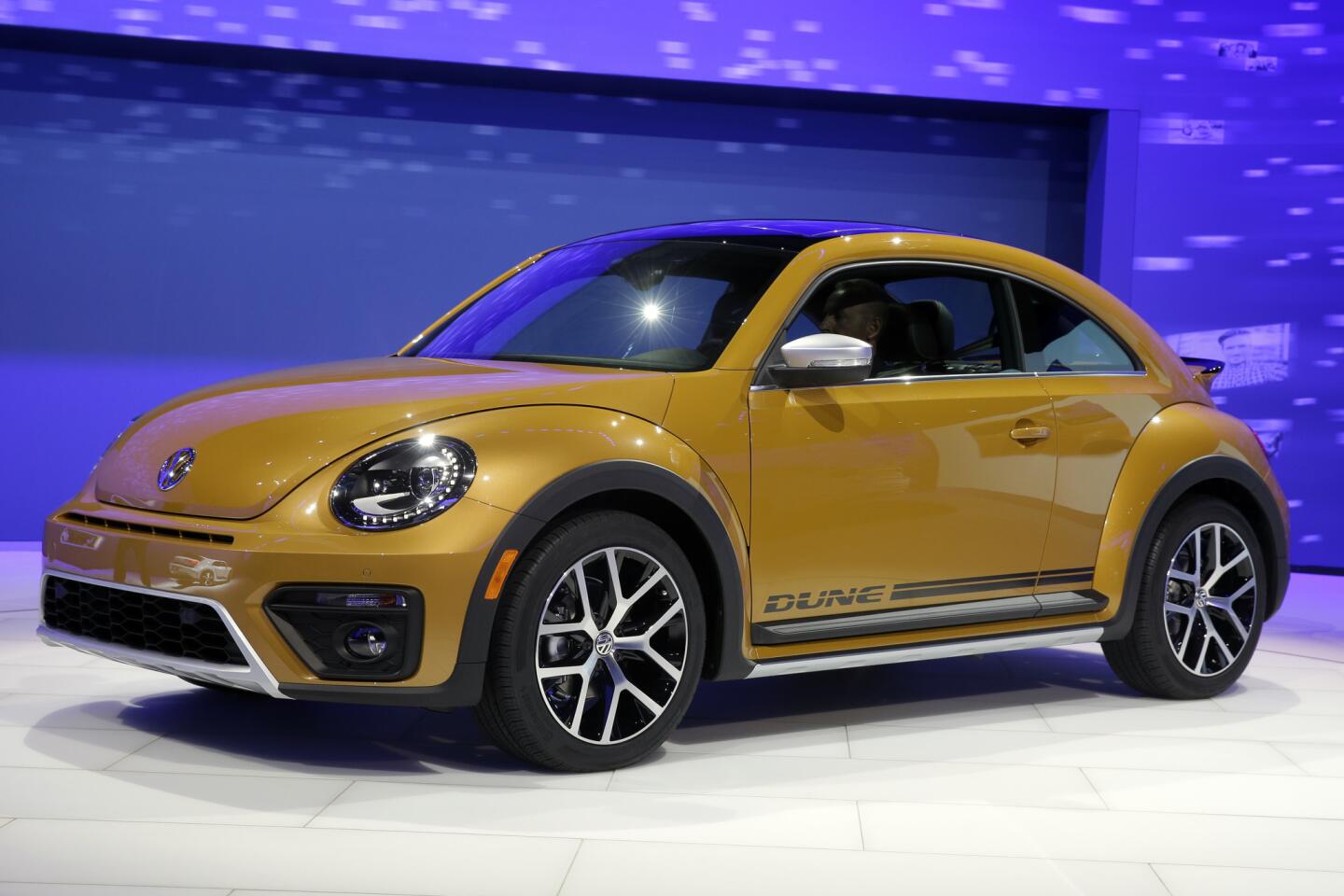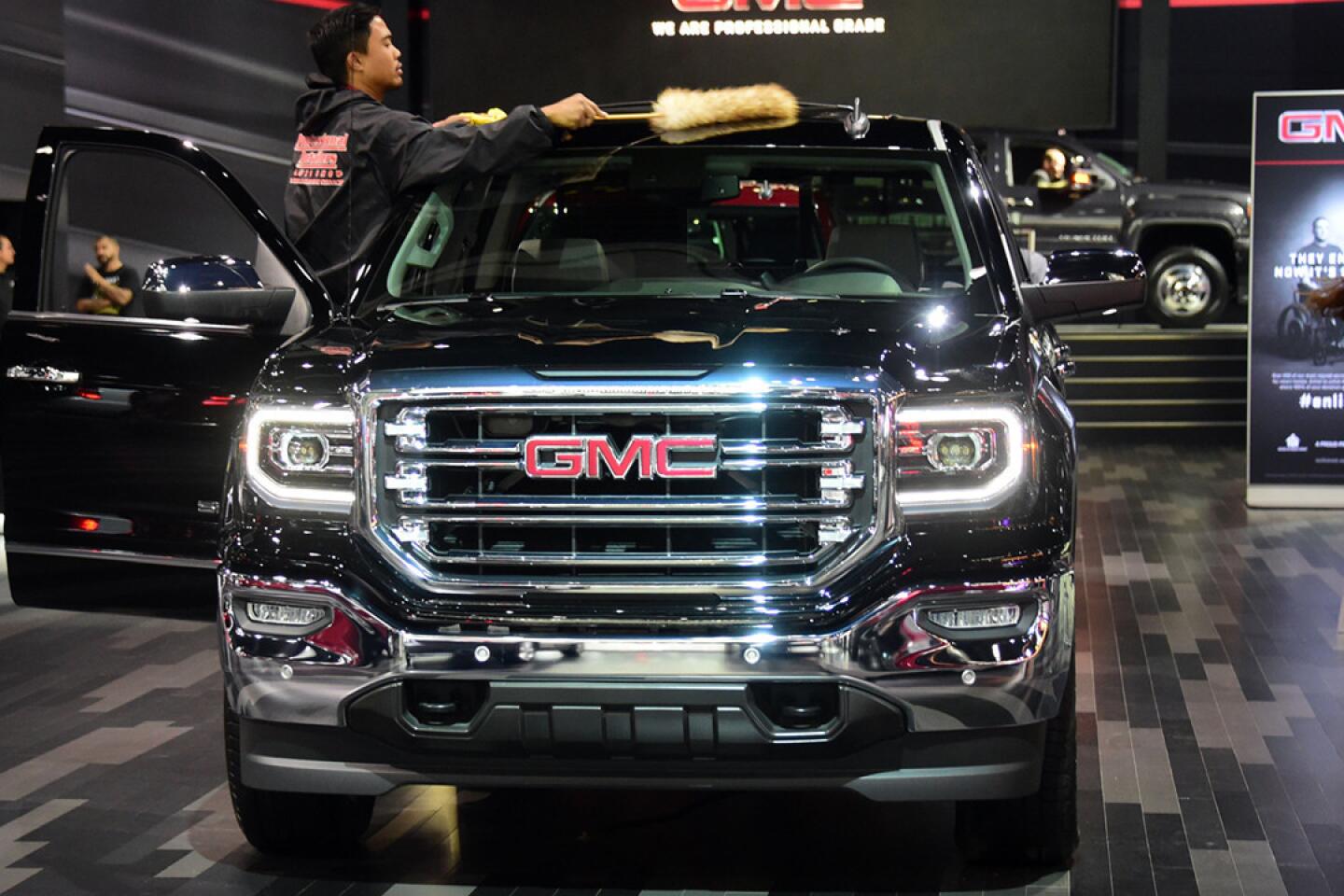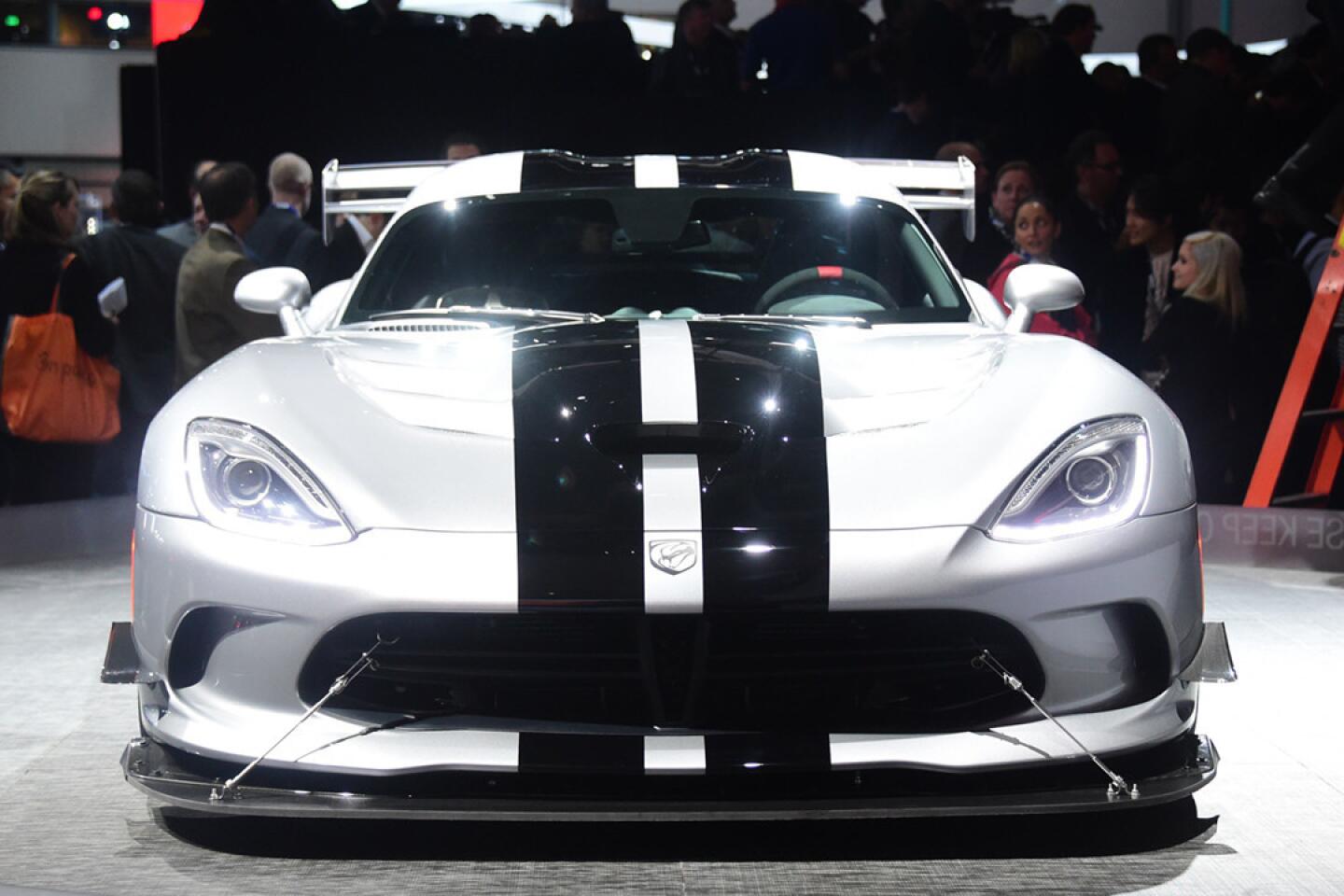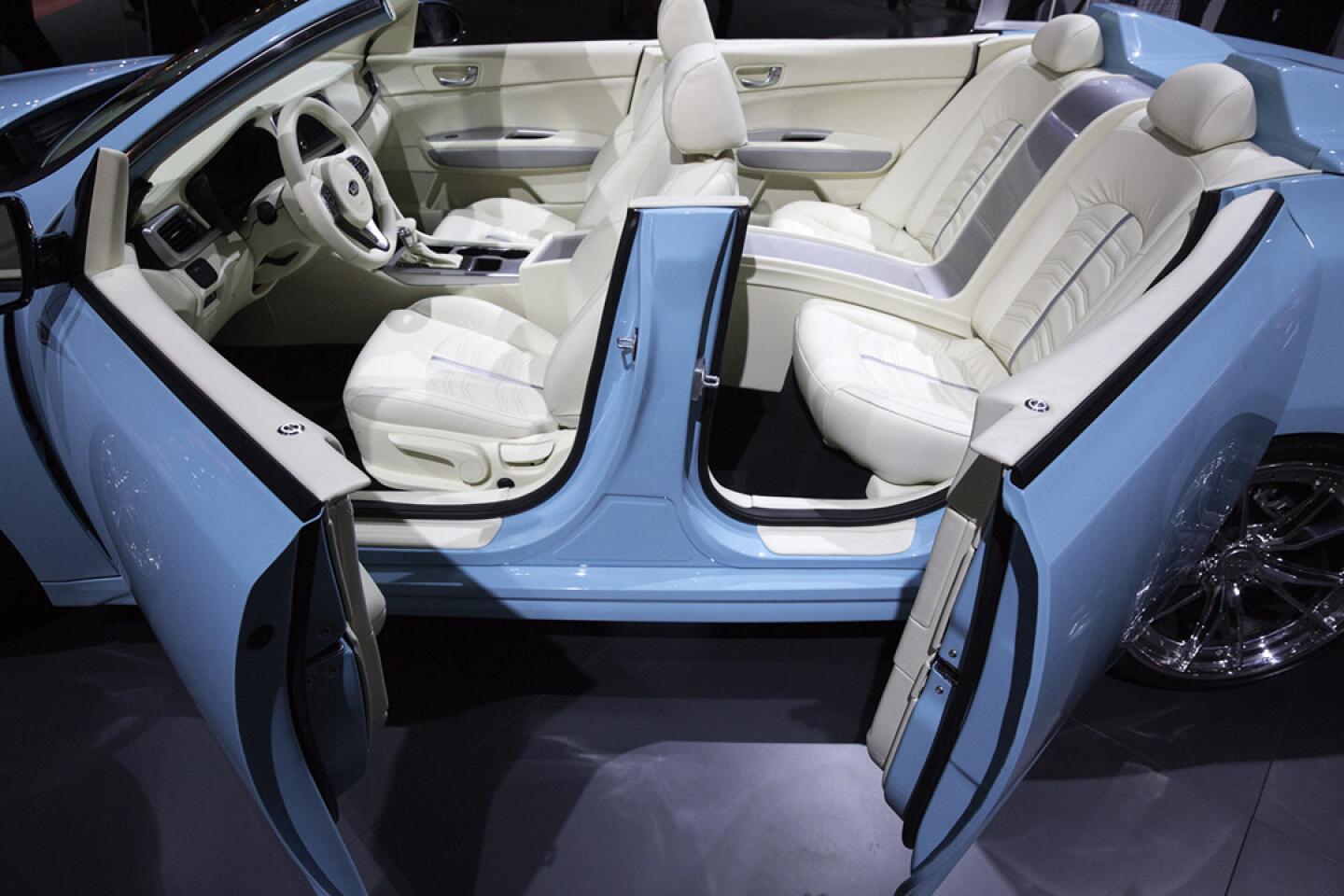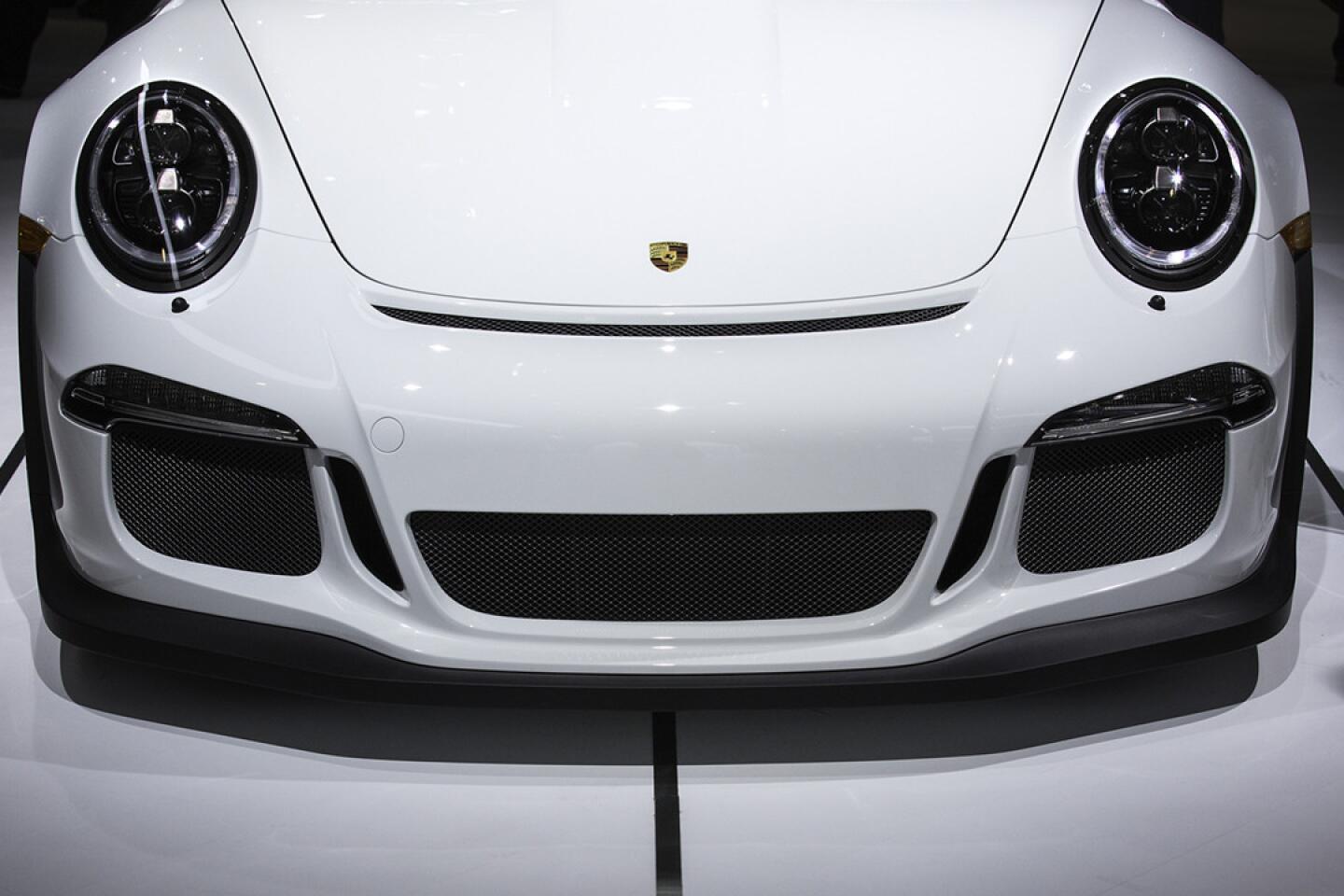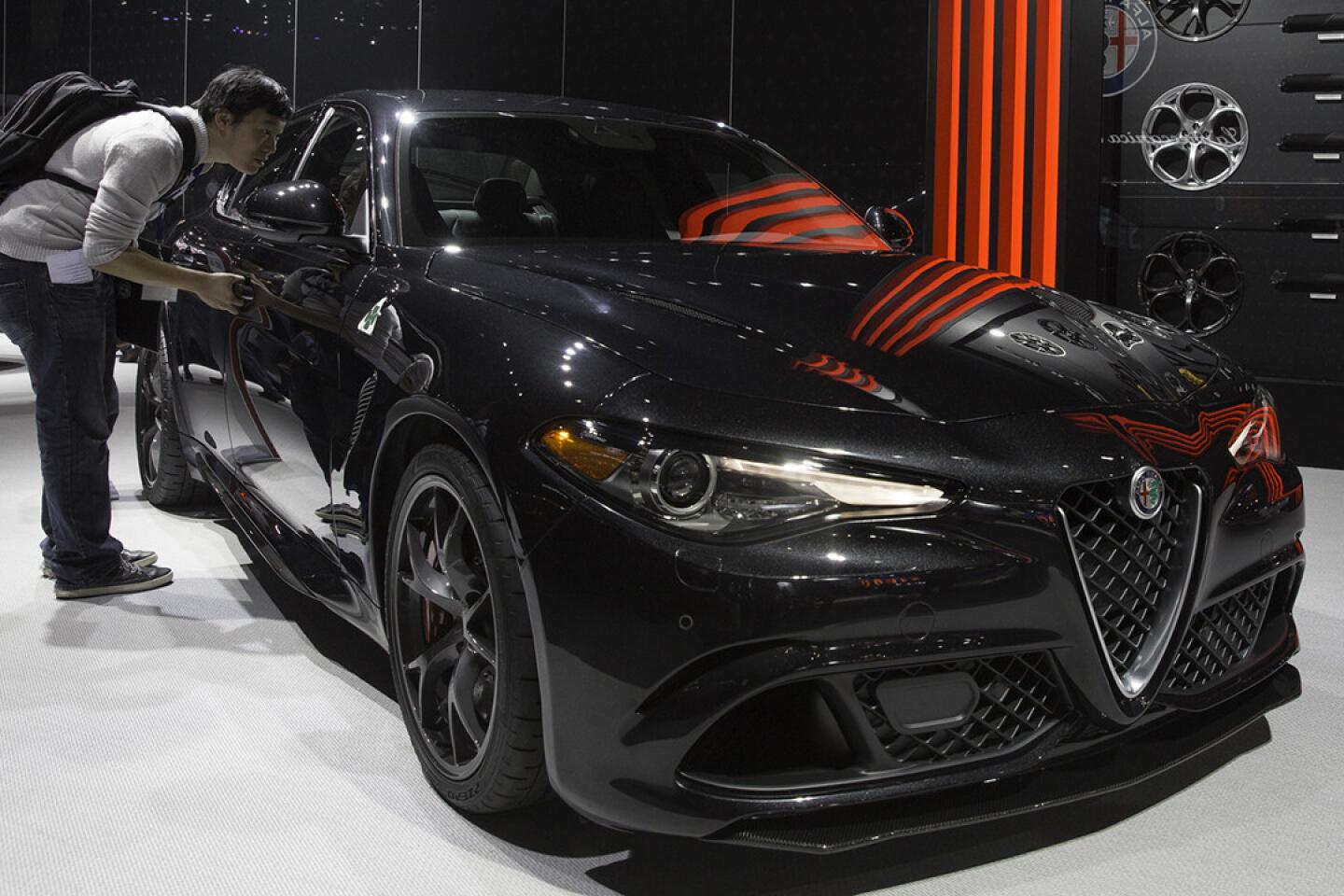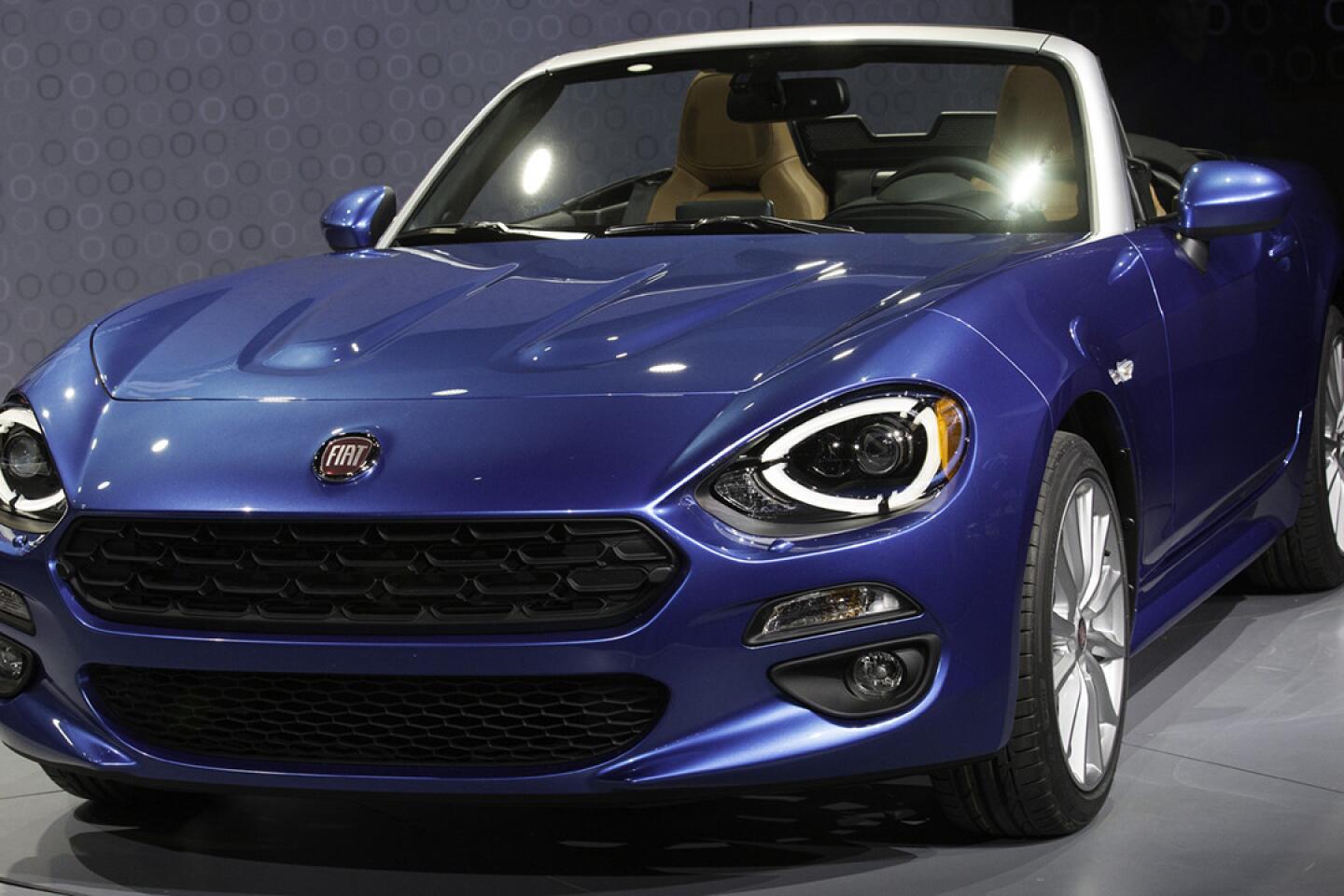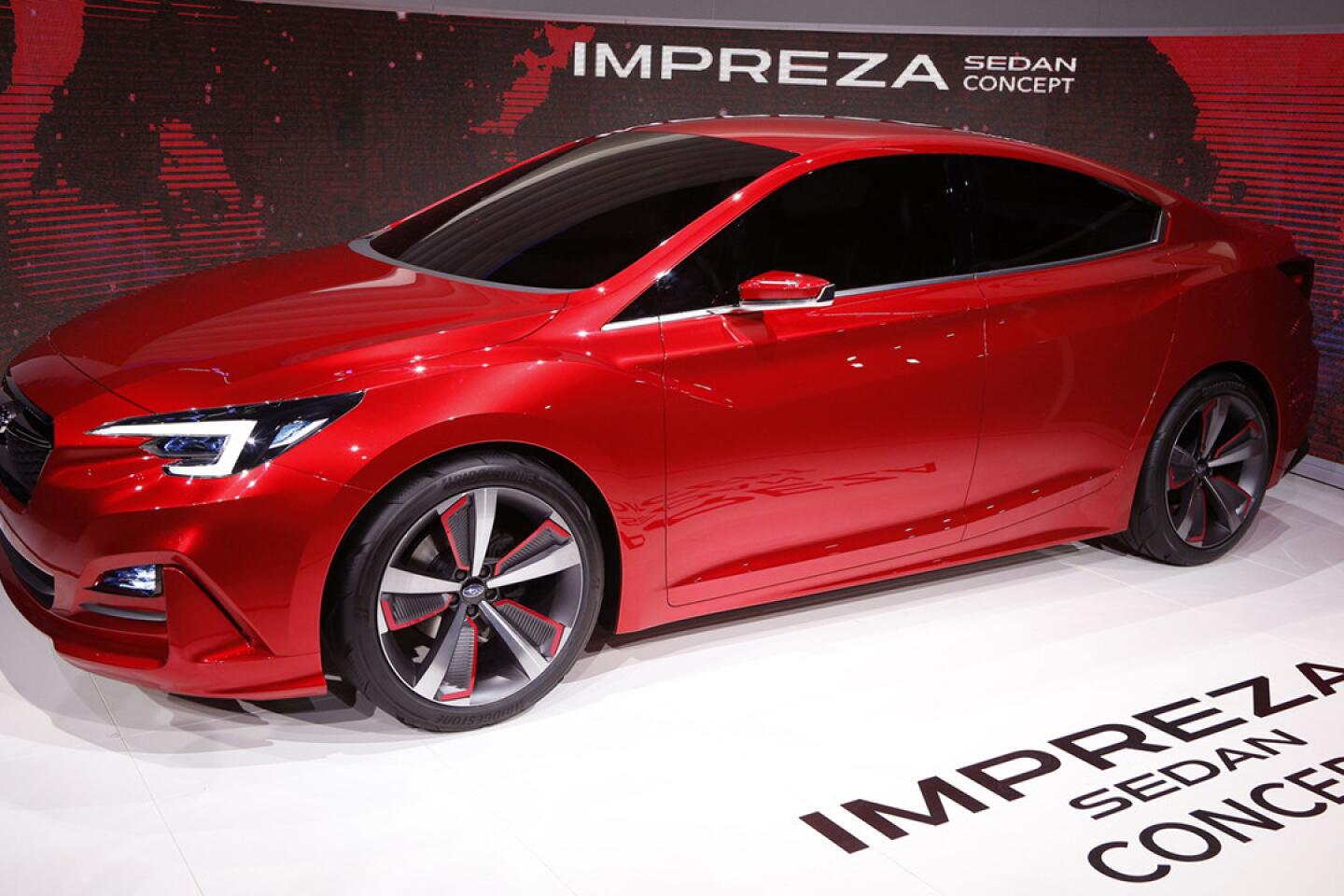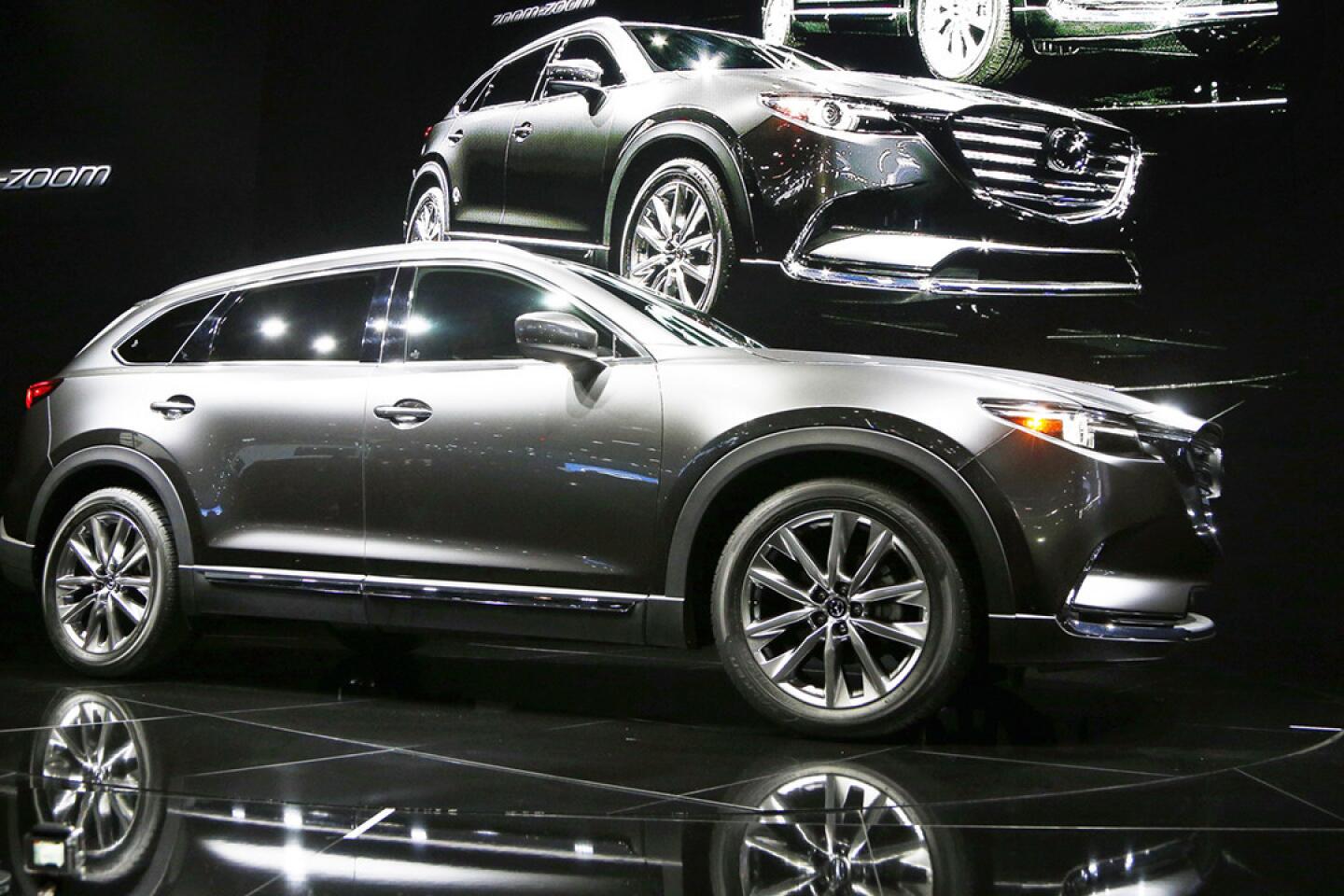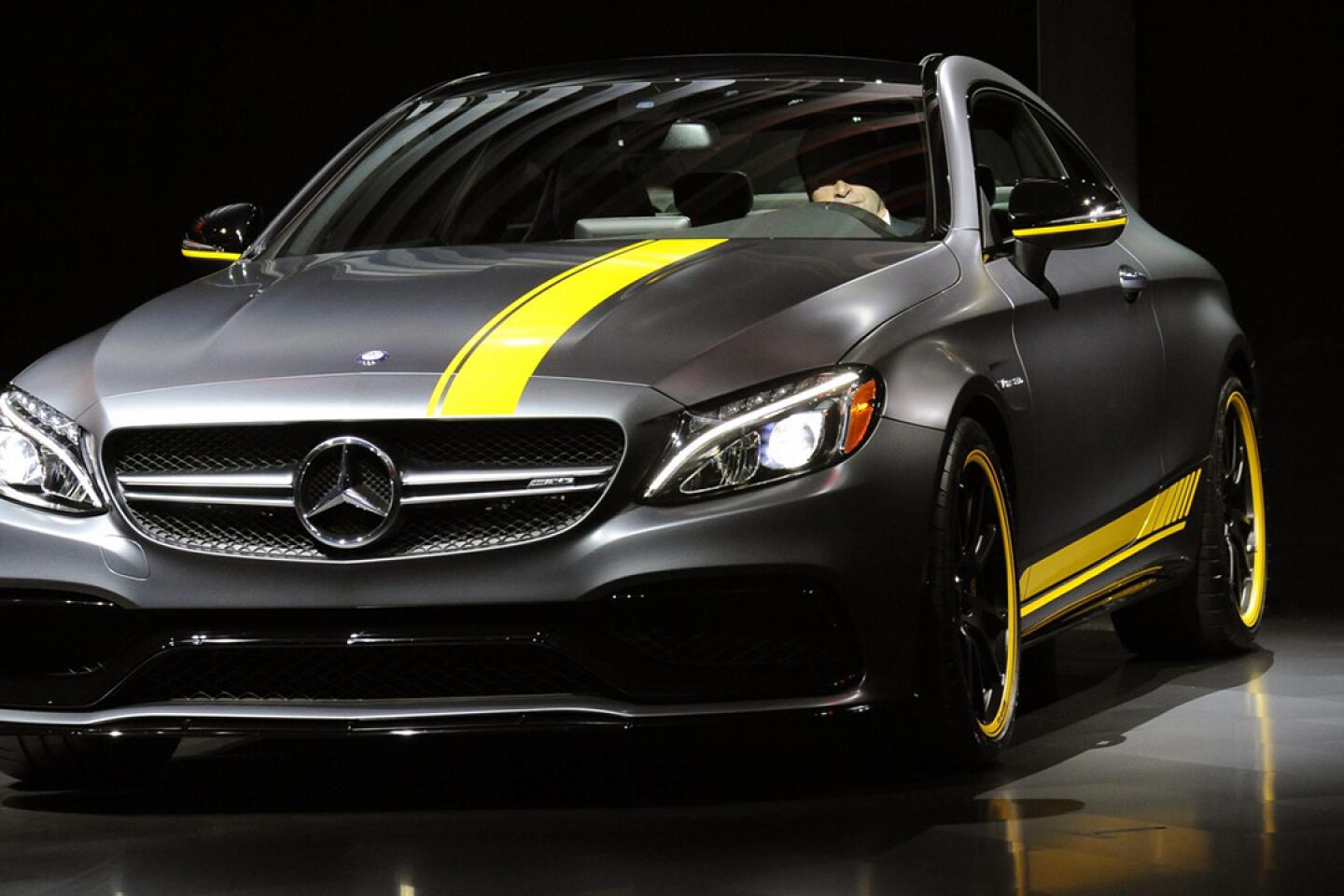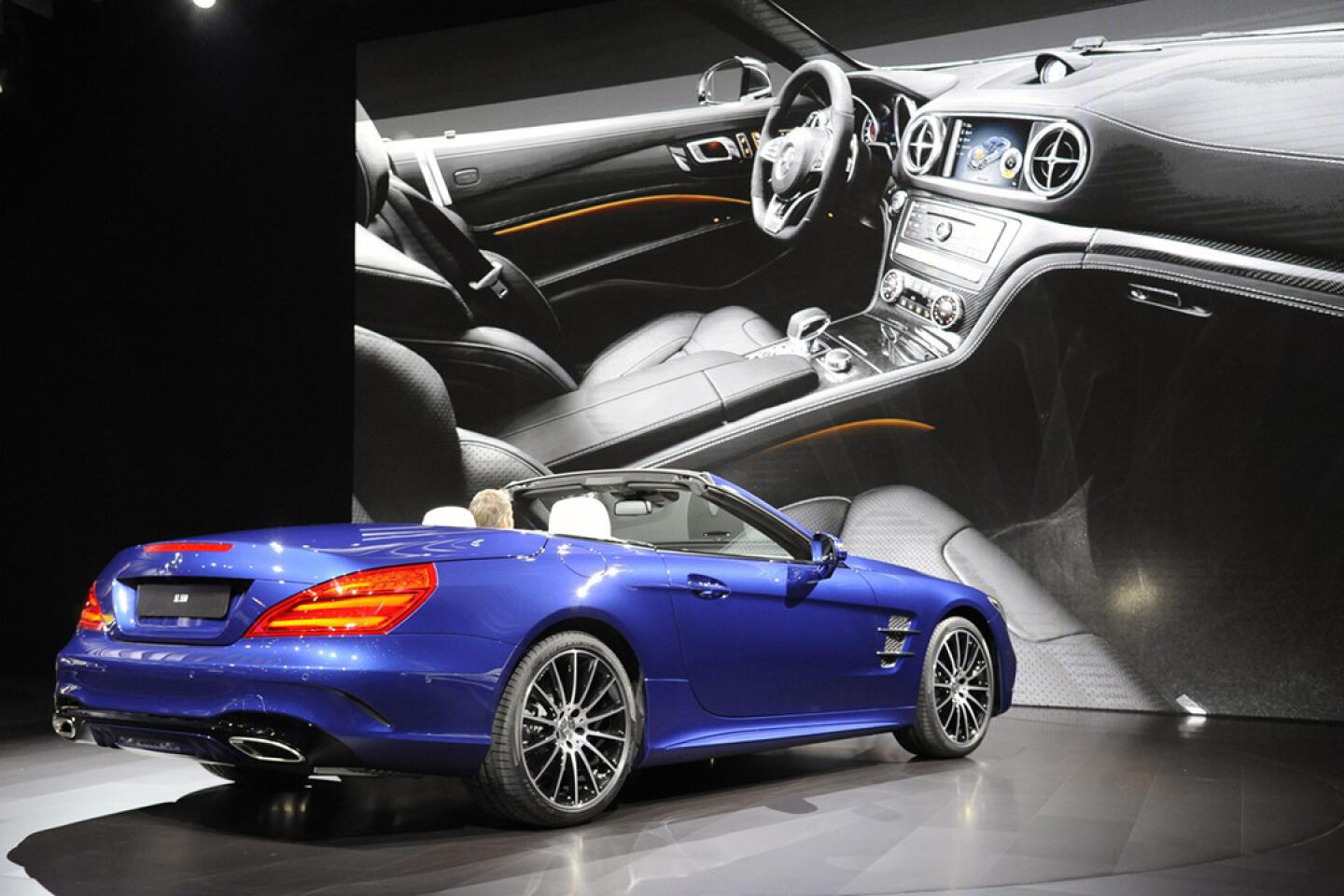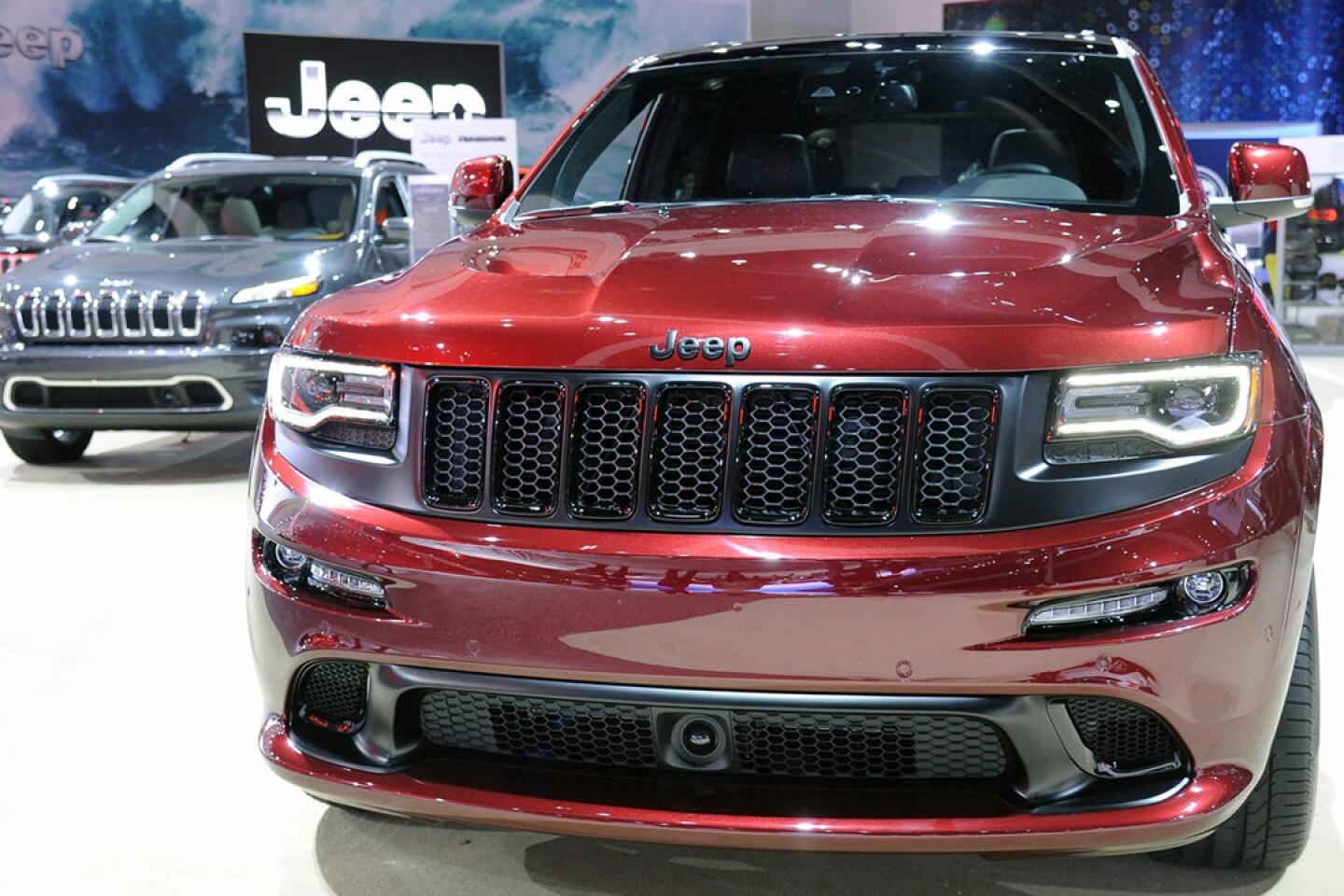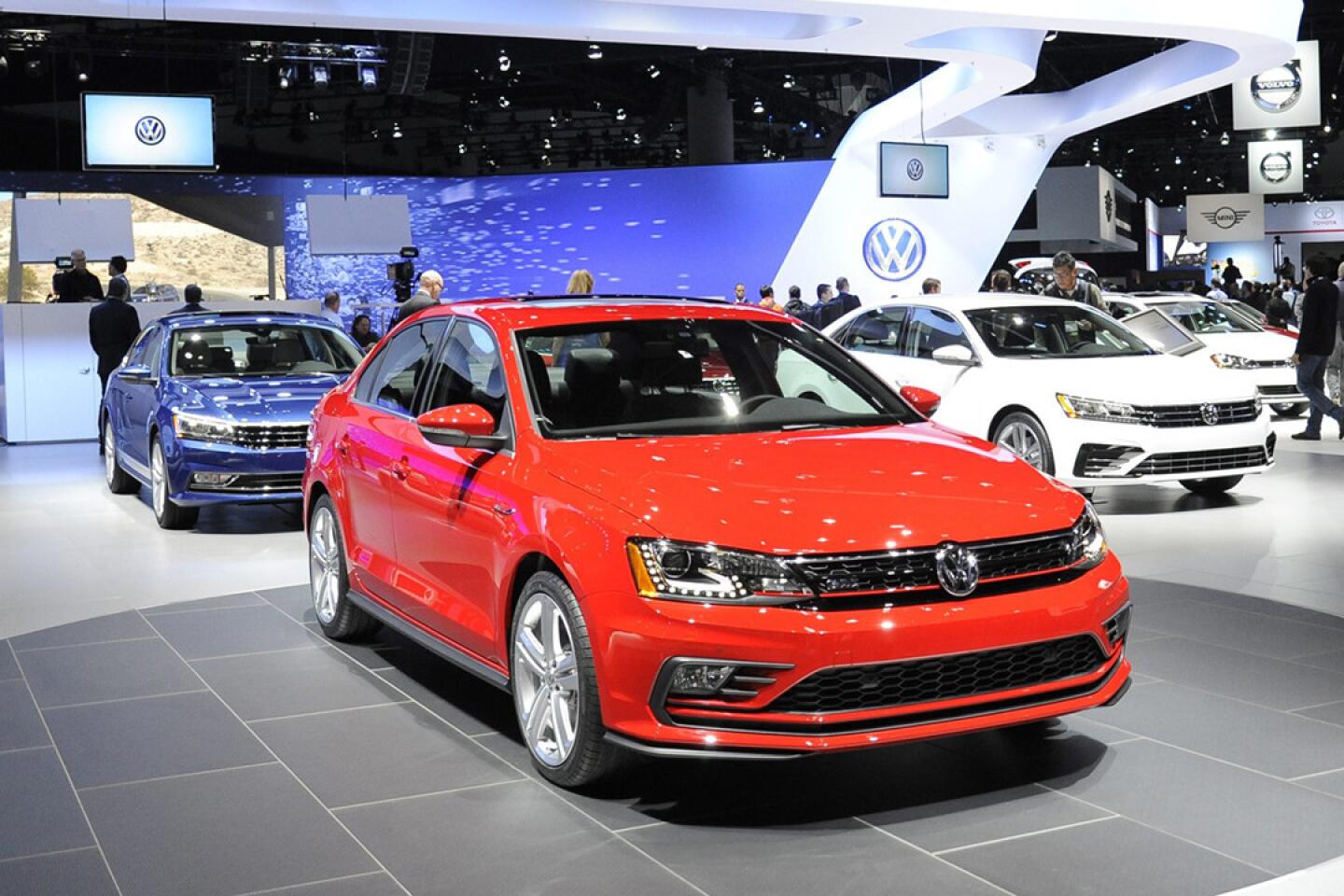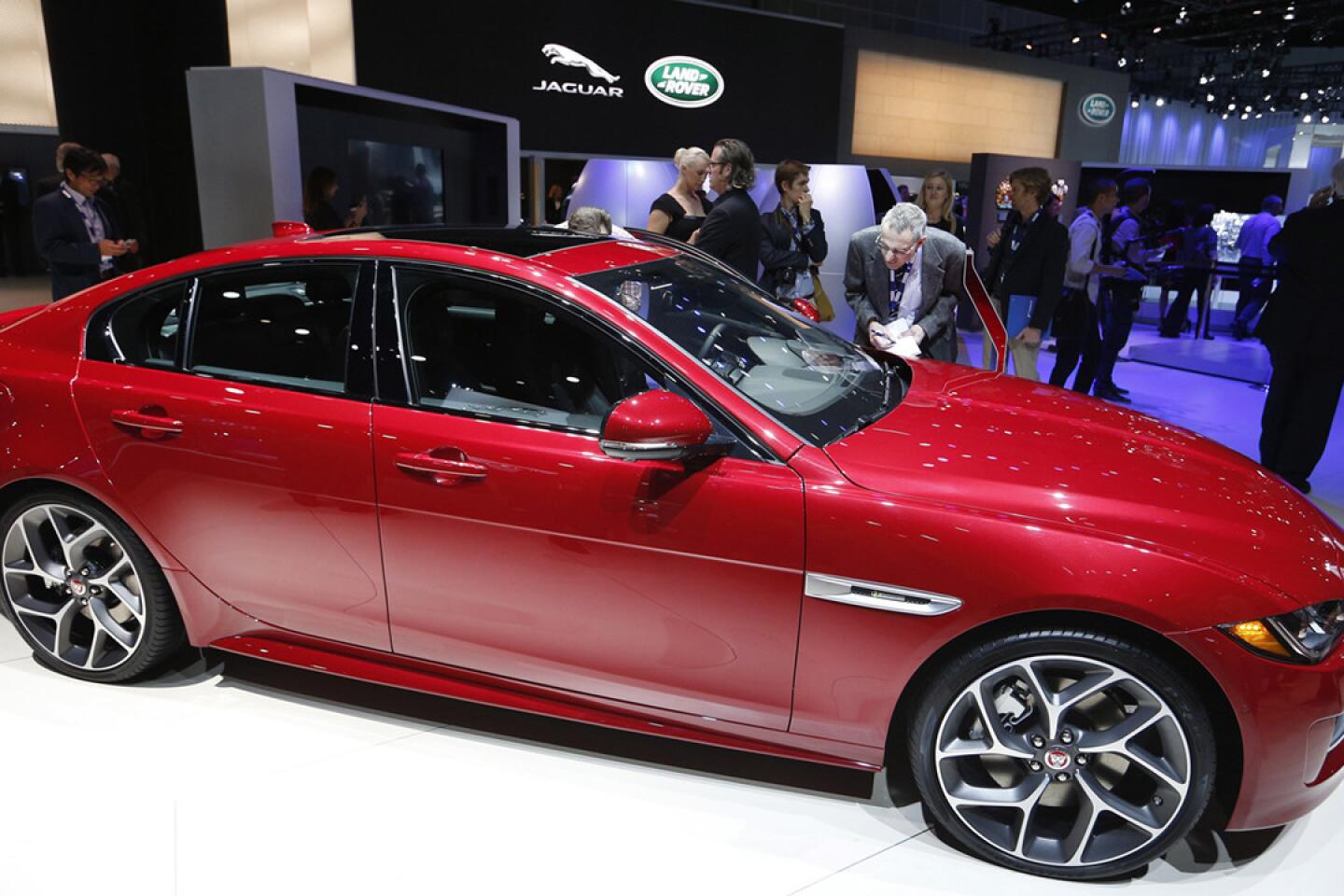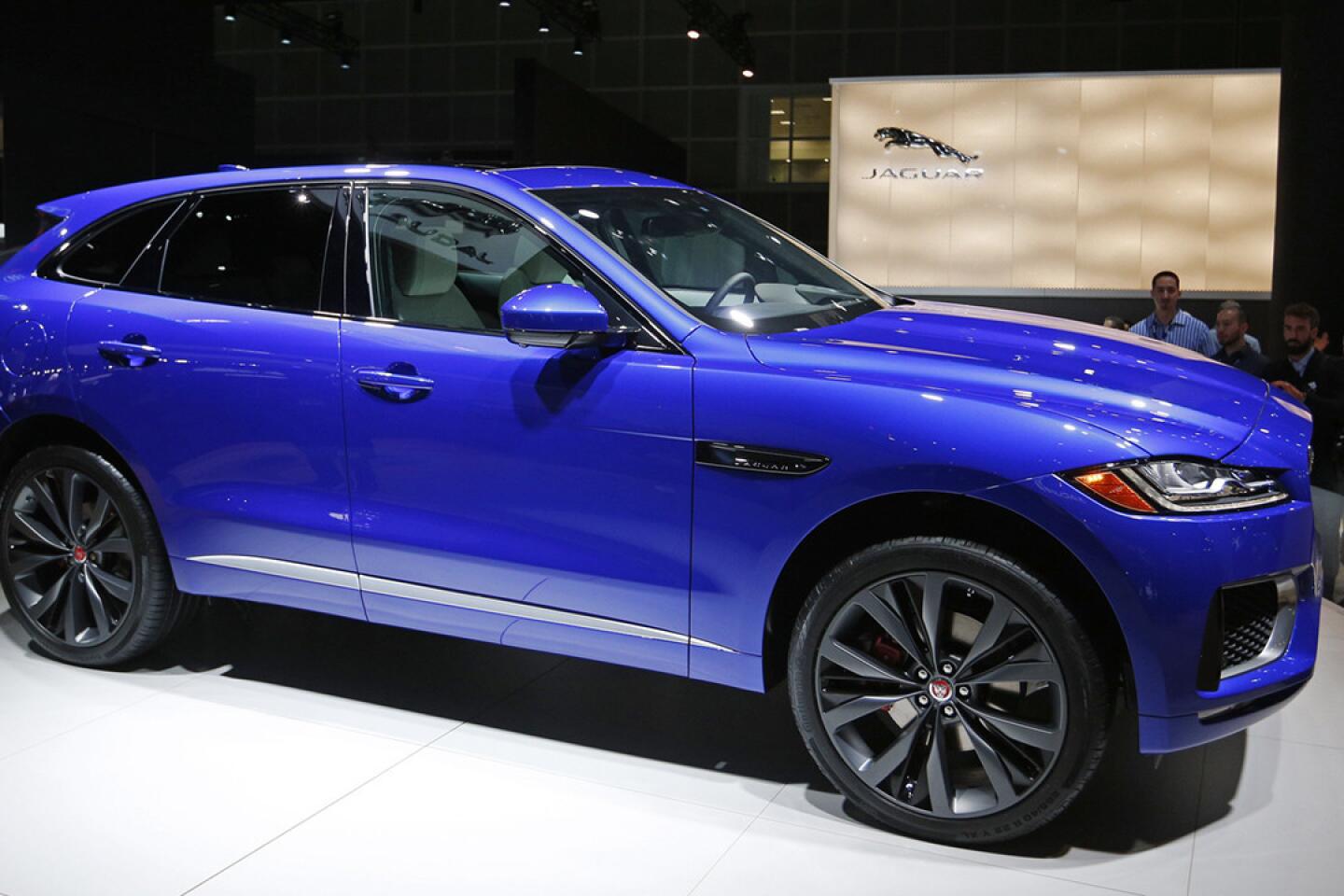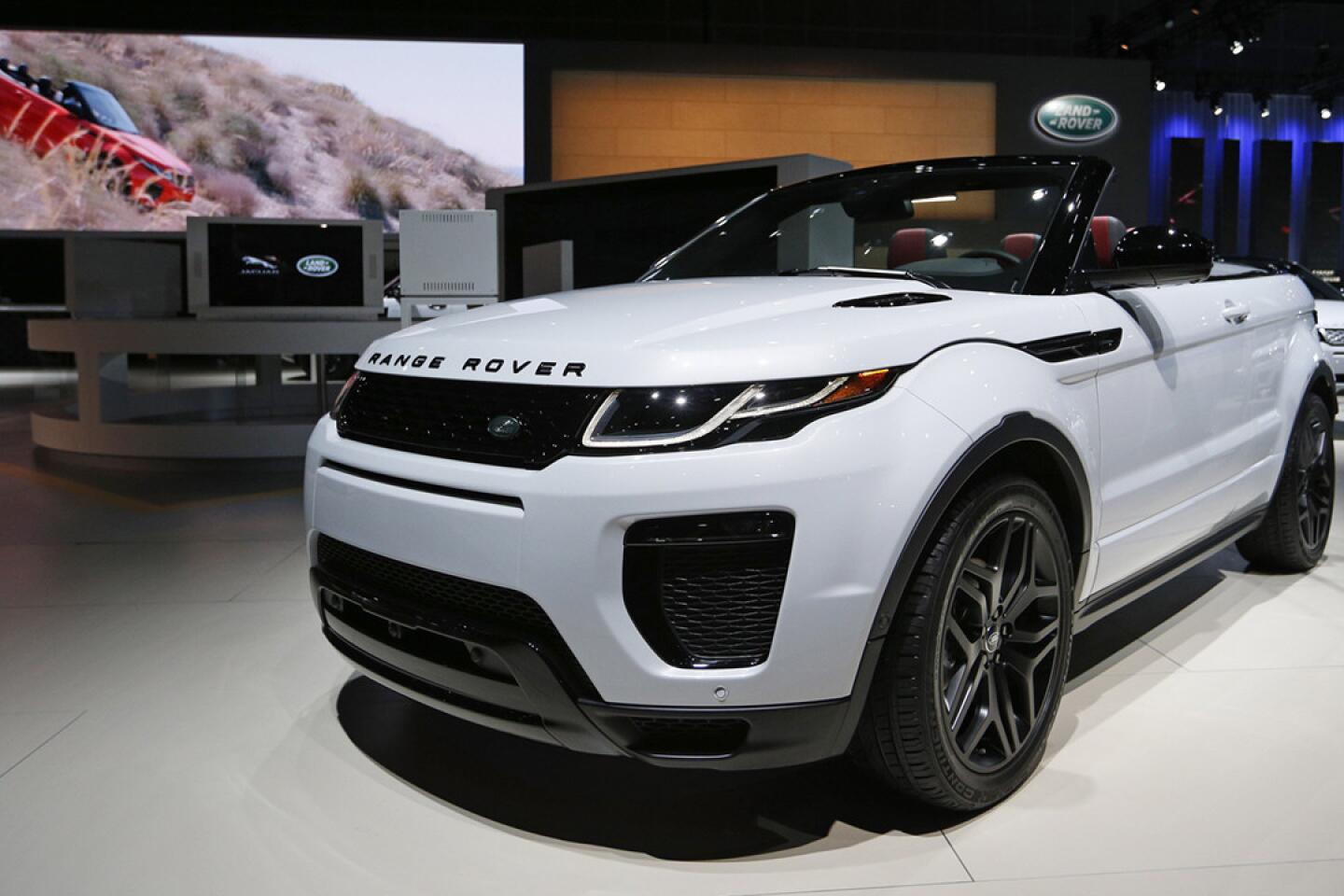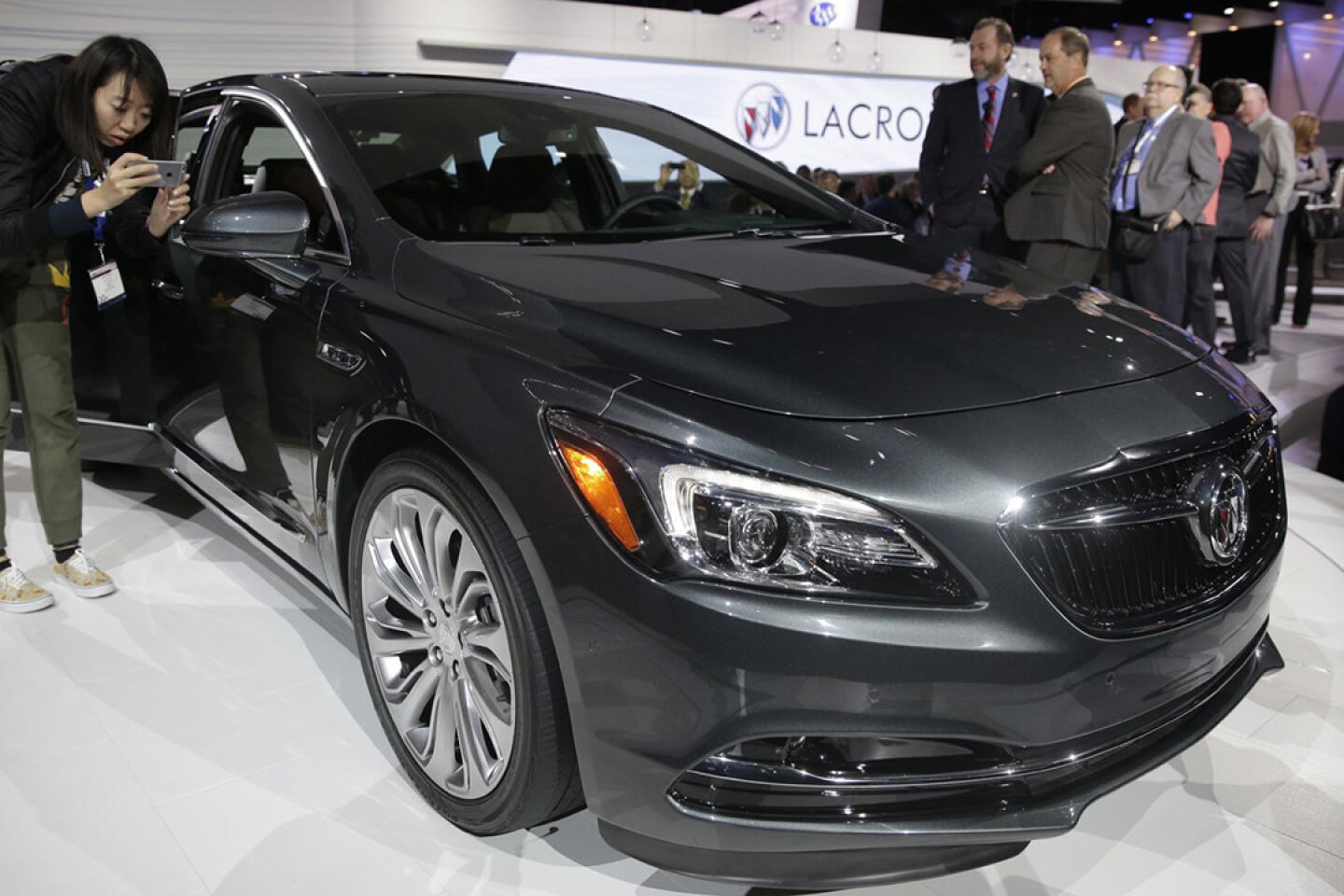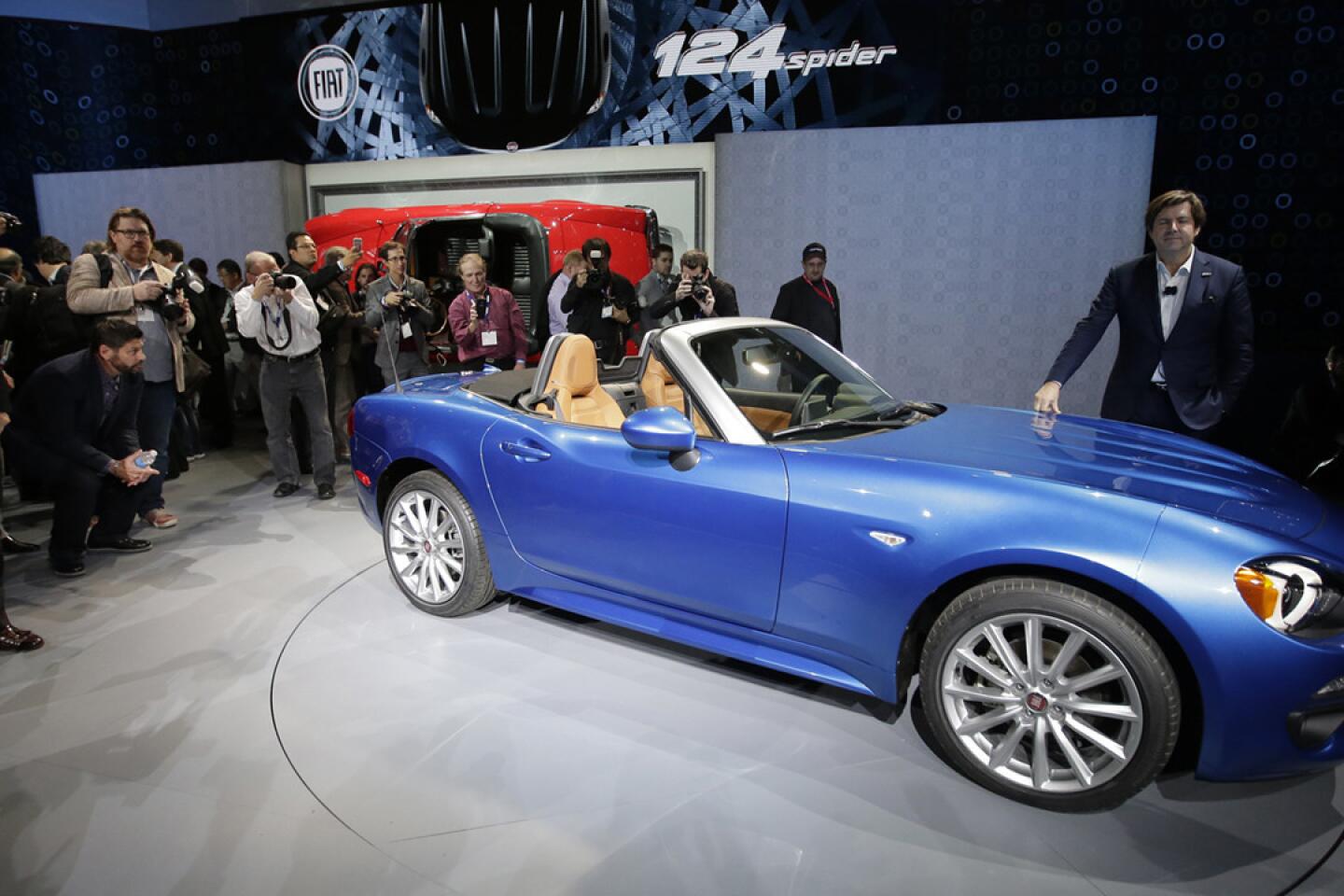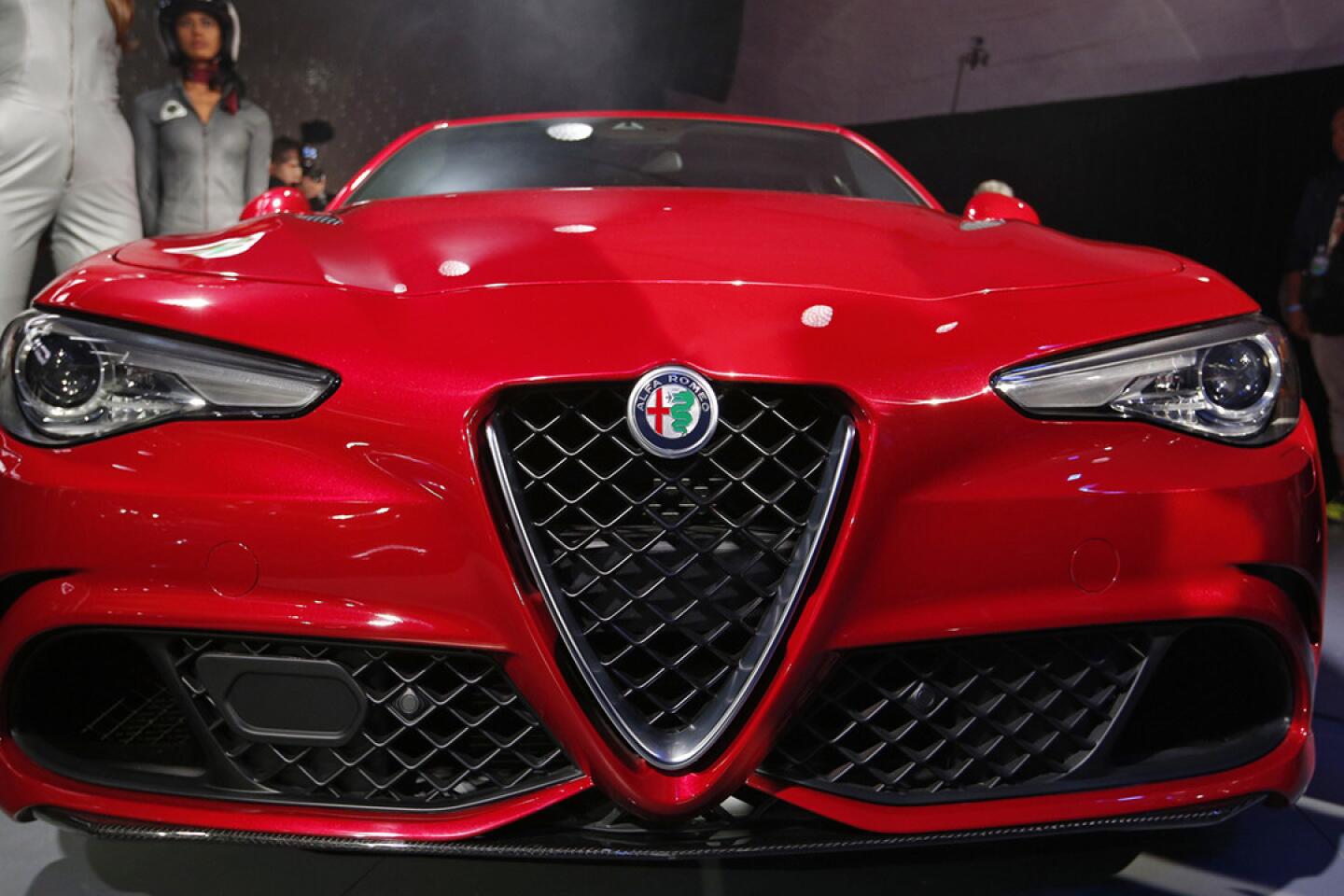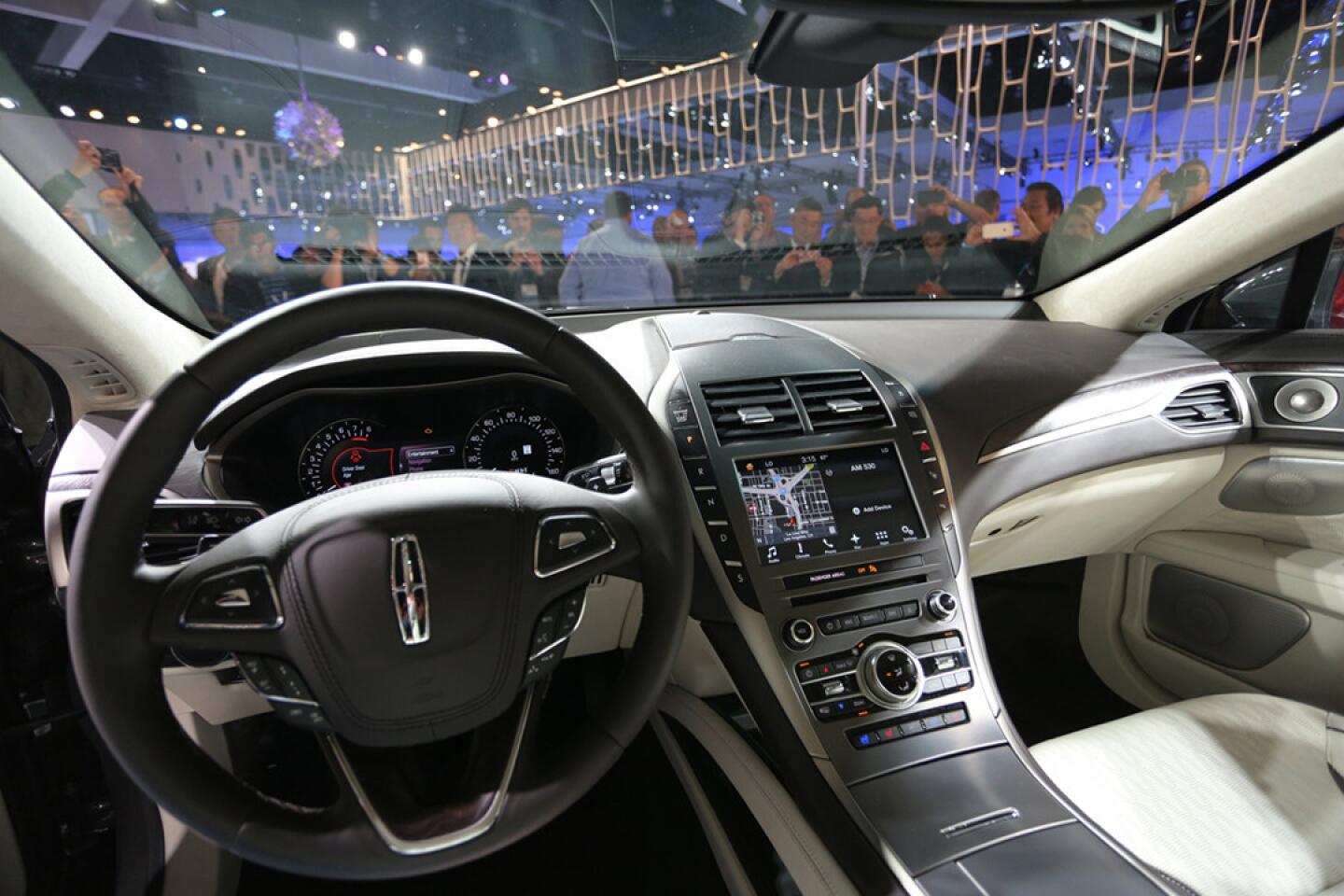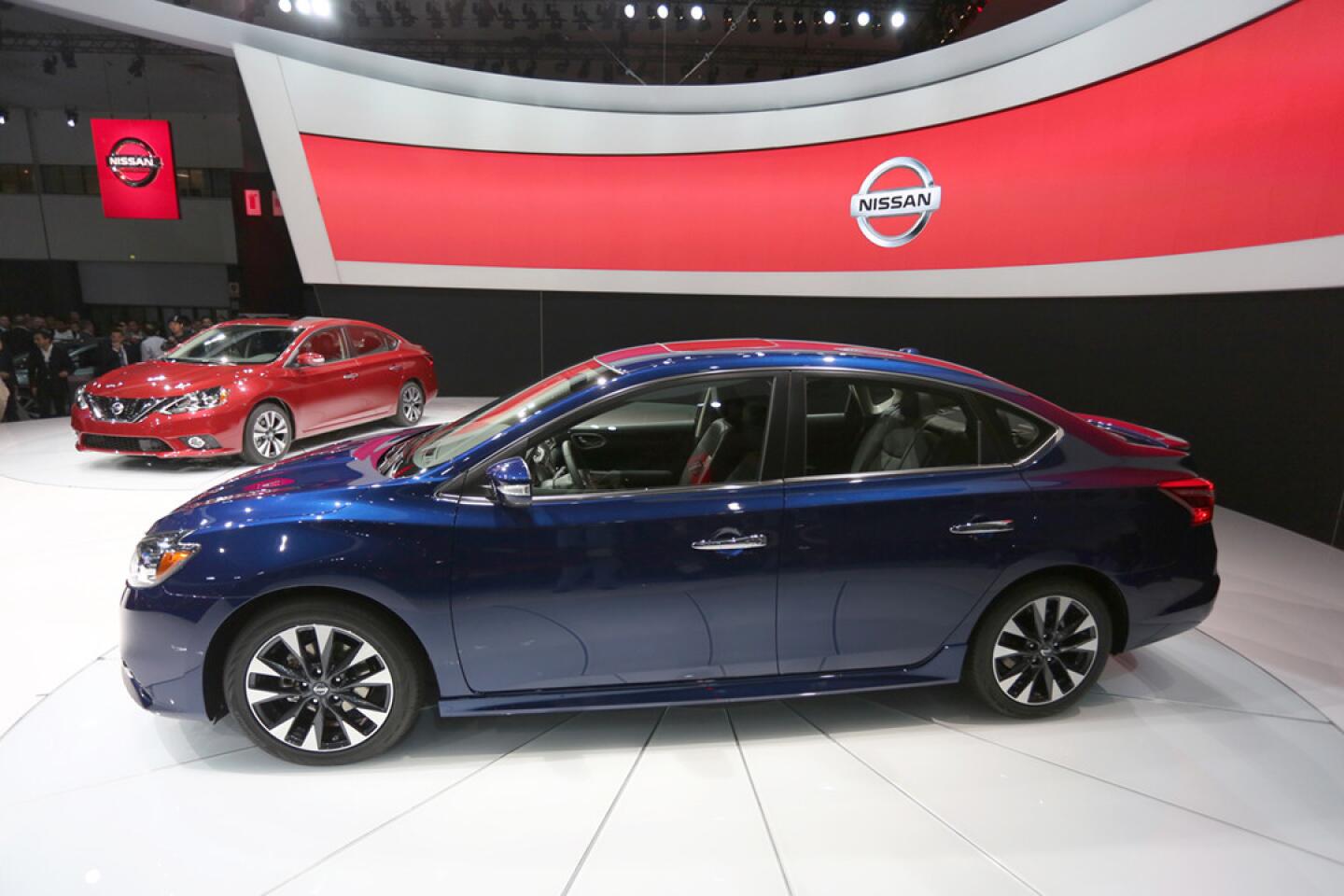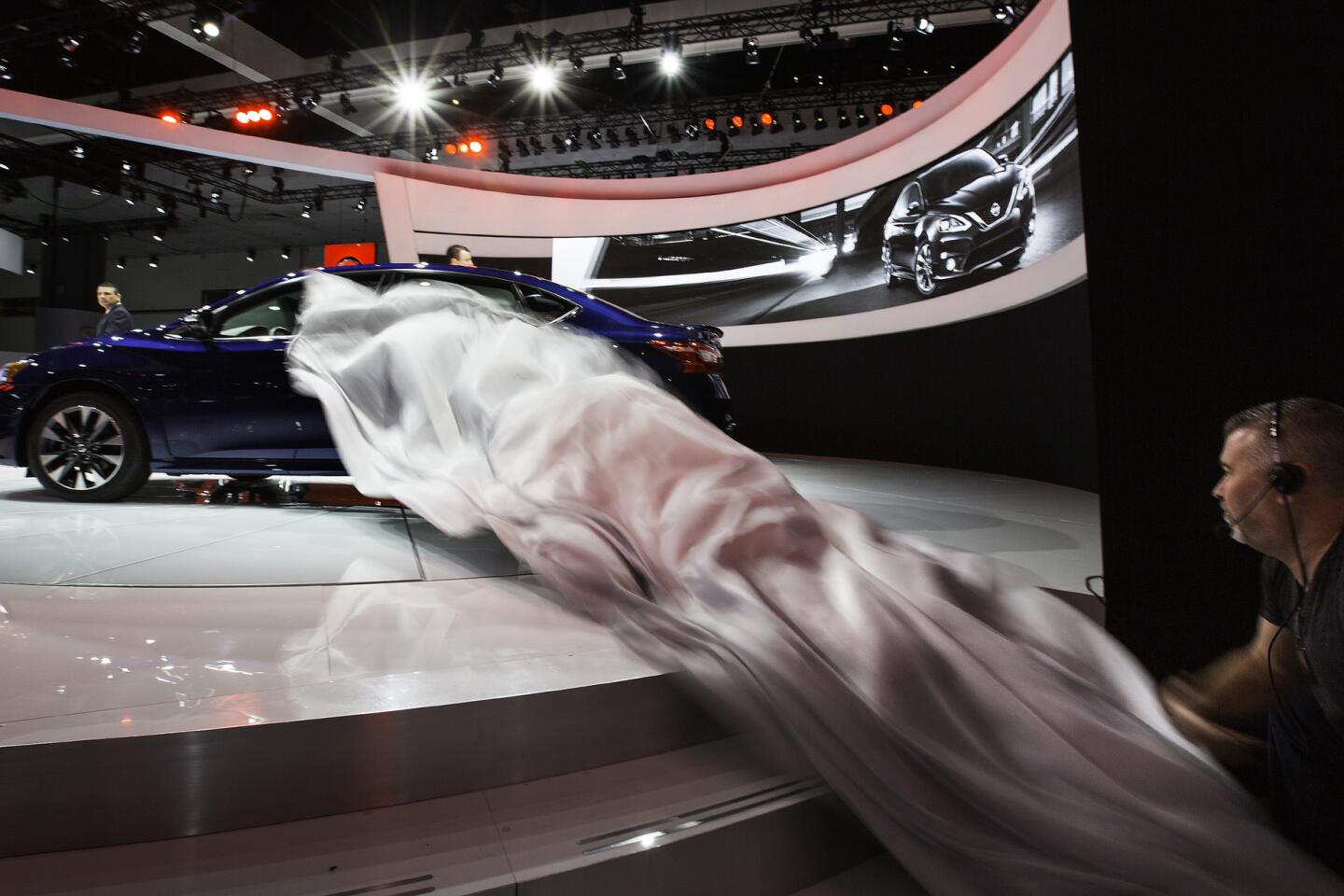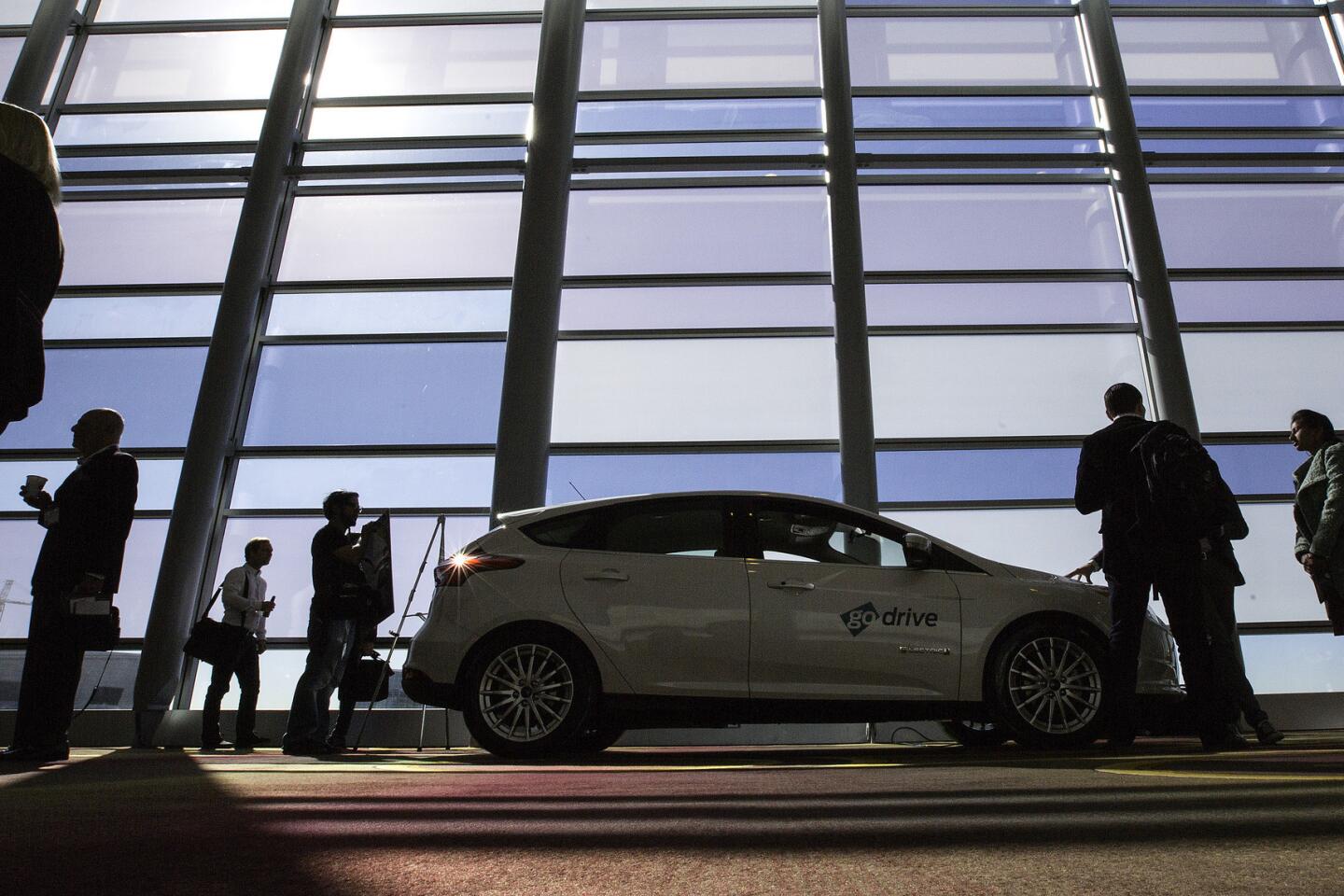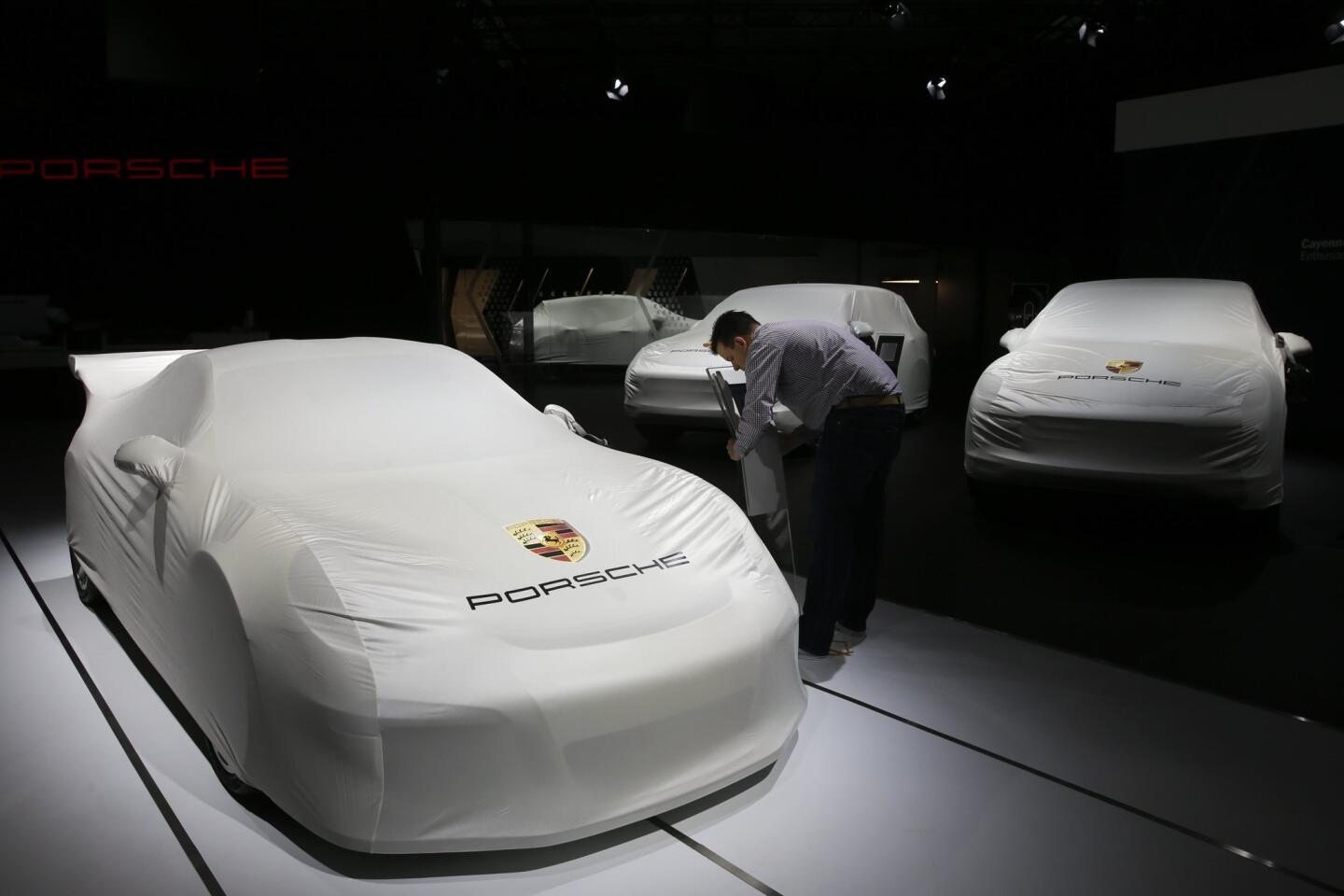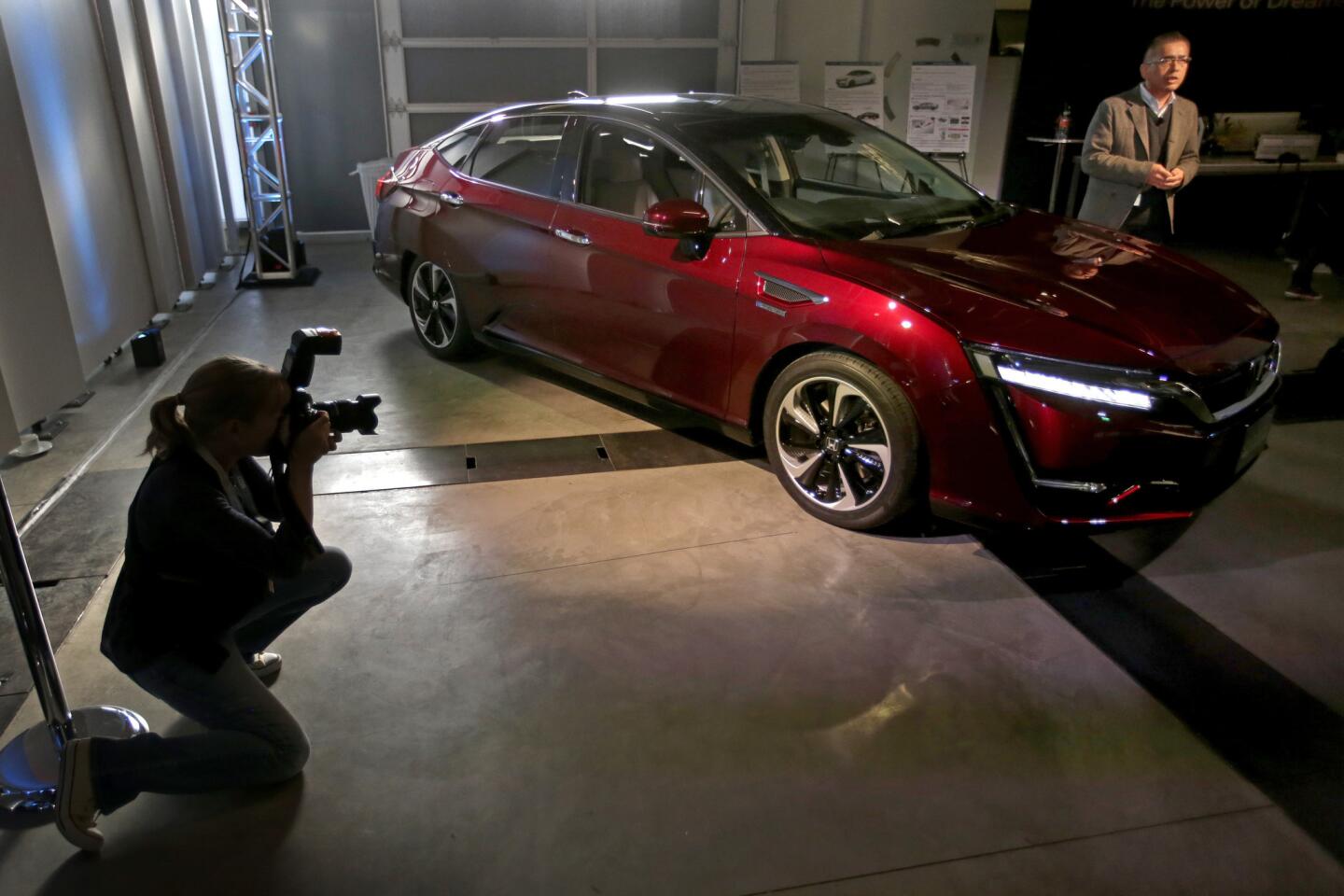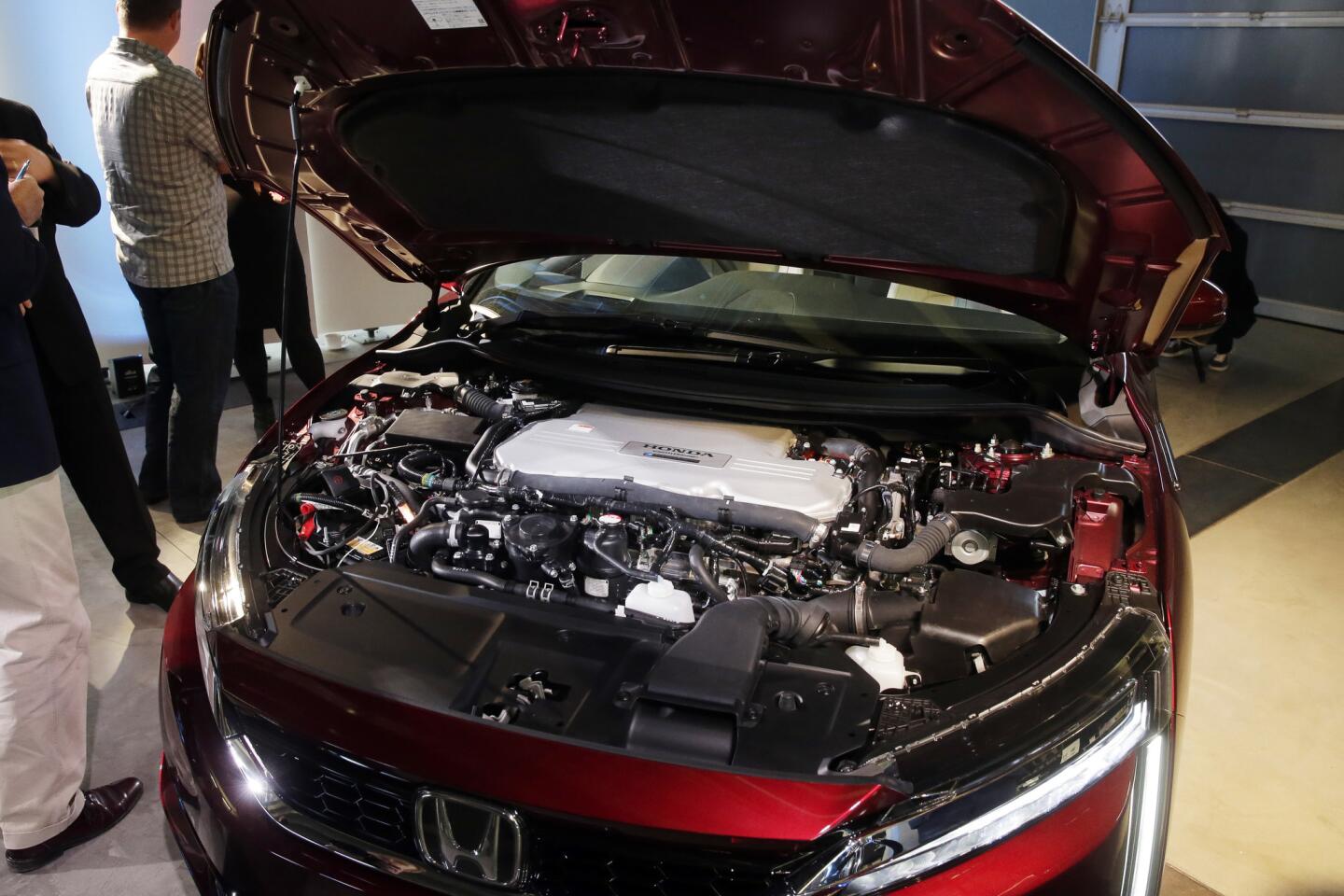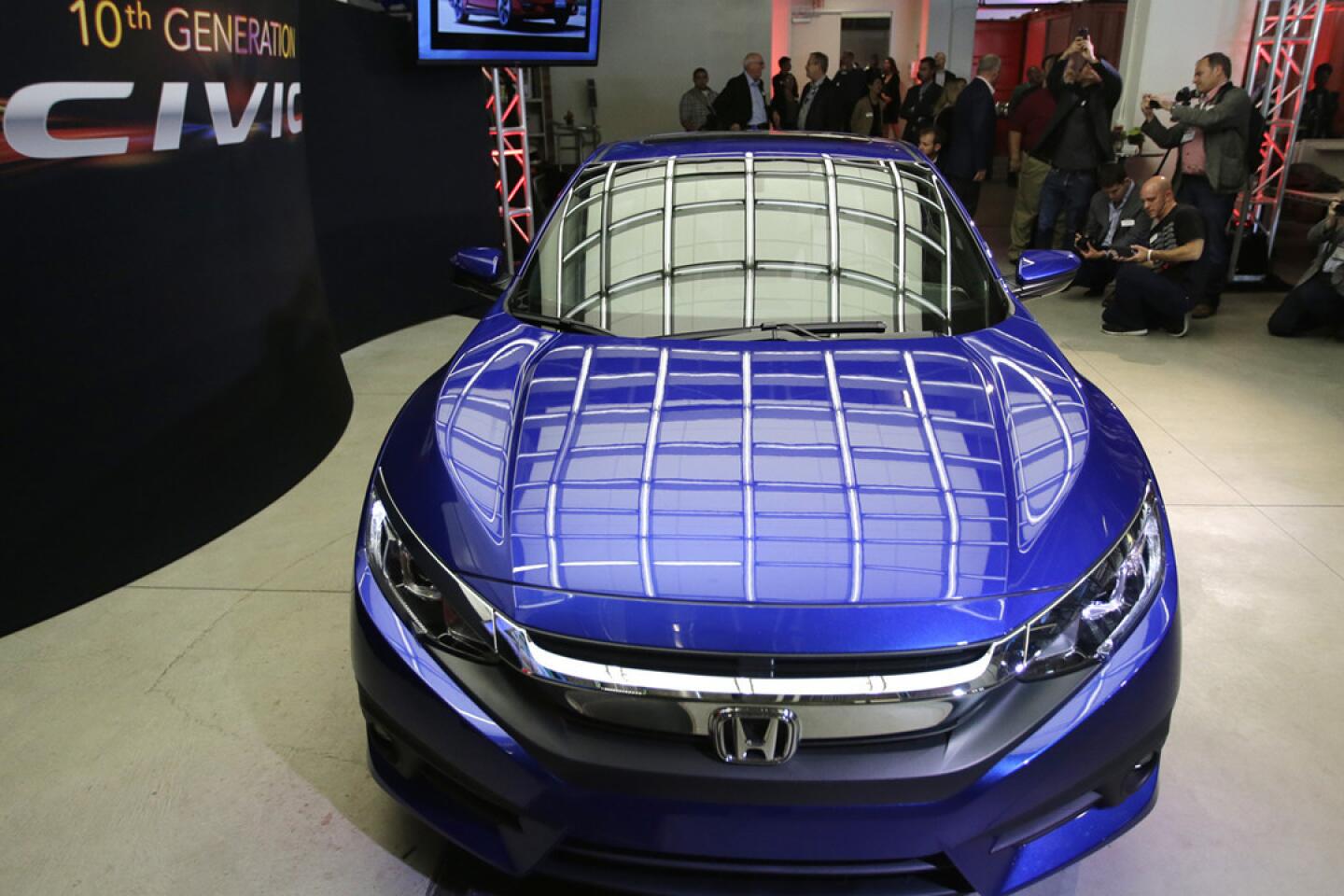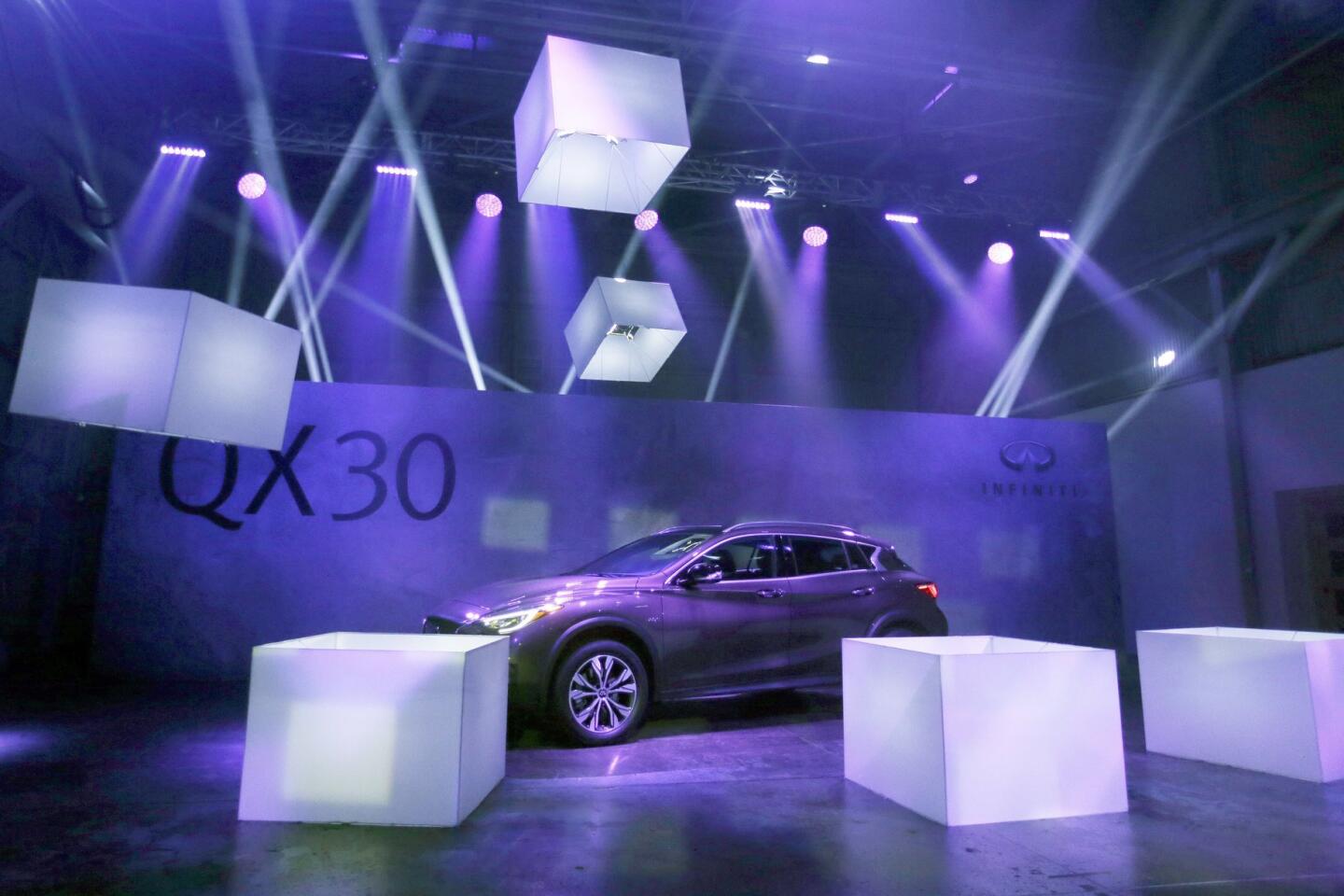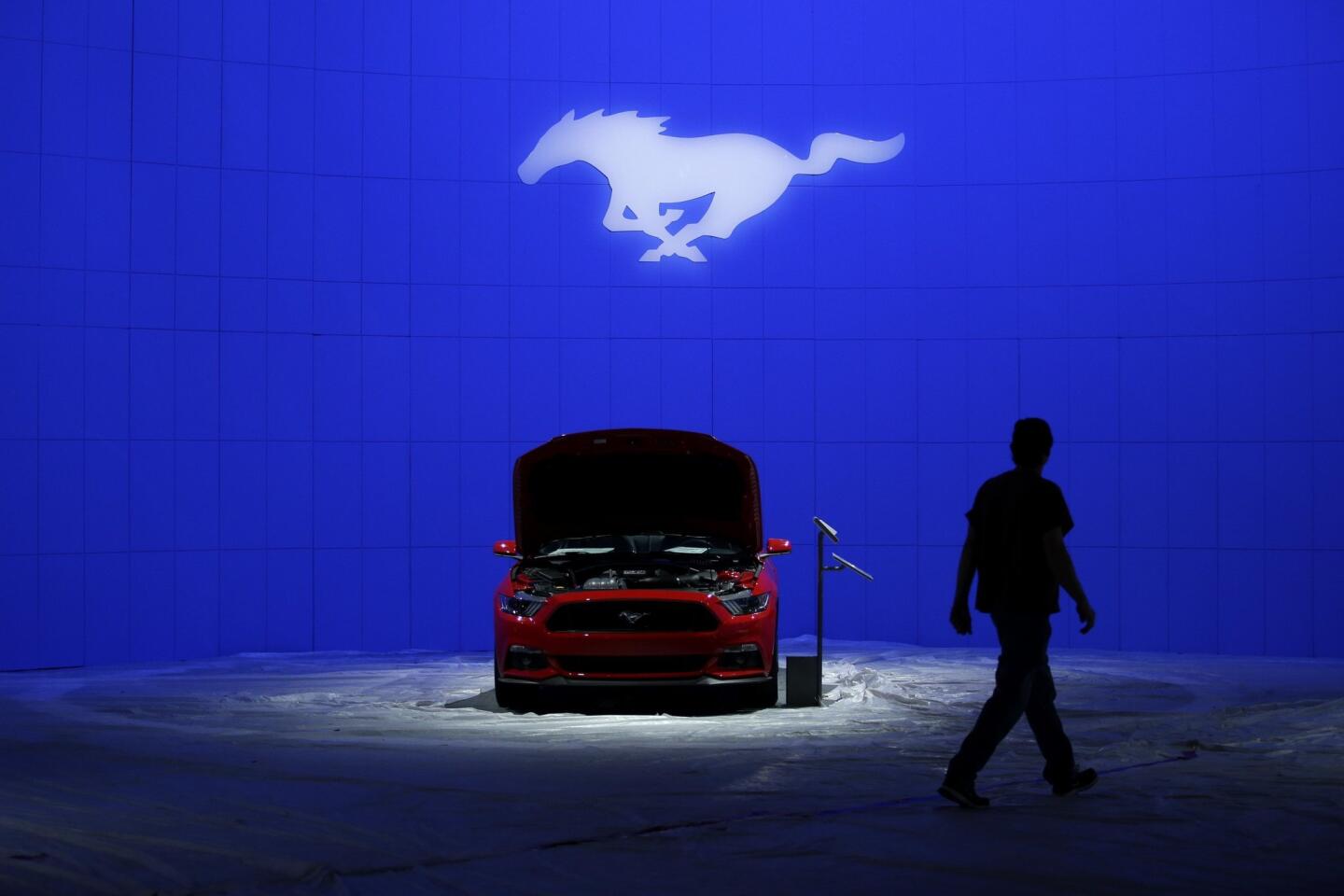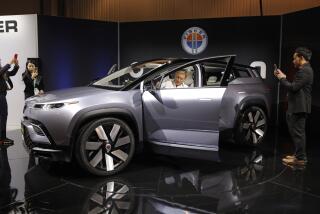L.A. Auto Show 2015: Fiat Chrysler’s ambitious new cars raise reliability issue
In debuting two ambitious new automobiles at the Los Angeles Auto Show, Fiat Chrysler is trying to capitalize on a decades-long American love affair with Italian design.
The carmaker faces an uphill battle — the result of an equally long American distrust of Italian engineering.
The automaker is using the Southern California platform to showcase the 2017 Fiat 124 Spider convertible and 2017 Alfa Romeo Giulia sedan, two new Italian-flavored offerings from the company that also controls the Maserati and Ferrari nameplates.
UPDATES: Get live updates from the floor of the L.A. Auto Show
Anticipation is high. The Fiat Spider is a return to soft-top glory for the company, whose 1960s and ‘70s 124 Spiders were beloved. The Alfa Romeo Giulia is a grand-touring four door with sports car specifications and luxury appointments.
Skepticism is high too. Fiat Chrysler’s Italian brands suffer from U.S. consumer doubts about durability.
Fans of the Italian automobiles believe that the Fix-It-Again-Tony suspicion is ill-founded.
“You can’t win the race if you don’t finish the race, and Ferrari has been dominant at long, hard races at Le
Mans, Sebring and Daytona,” said car collector and Ferrari-lover Bruce Meyer, who has owned a 1967 Ferrari 275 GT/B for 45 years. “Mine has never let me down. The reliability issue is an urban myth.”
Consumer Reports takes a different attitude. It has judged Fiat among the worst of the worst. In a recent reliability study, the publication found Fiat finishing dead last, ranked 28th out of 28 cars tested.
“The problem with Italian car companies has been quality and reliability,” said Jake Fisher, director of auto testing of the car-quality publication. “It’s not fair to judge them by their reputation of 20 or 30 years ago, but it is fair to look at the recent data. Fiat models are the absolute worst — and Chrysler is not far behind.”
Fiat Chrysler Automobiles has experienced strong sales with the relaunch of the Fiat brand, which began in 2007 with reintroduction of the once-ubiquitous Fiat 500, a bubbly subcompact. Research provided by the online auto sales and data company TrueCar shows the company sold more than 40,000 Fiats in the U.S. each year from 2012 to 2014, with 2015 totals likely to hit that number too.
That’s considerably more business than the company did with the higher-priced Maseratis and Ferraris. The company moved 12,942 of the former and 2,145 of the latter last year — though the profit margins on those vehicles are believed to be considerably higher than on the Fiats.
Analysts and others agreed that the Fiat problems of old were more severe than the reliability issues of today, which may involve customer dissatisfaction with navigation systems or long-term performance problems more than vehicles simply breaking down.
“It’s relative, because the worst car in 2015 is probably better than the best car in 1982,” Kelley Blue Book analyst Karl Brauer said. “The spectrum is so much narrower now that a bad cup holder can torpedo a car’s popularity. Nobody is buying Fiat 500s and being stuck by the side of the road. But 30 years ago, they were.”
What has not changed, in far more than 30 years, is the excellence in Italian coach building and design. Leslie Kendall, chief curator of the Petersen Museum and an unabashed Fiat admirer — he once owned a 1961 Fiat 1200 roadster — said no other country has produced so many beautiful automobiles.
“Since World War II, Italy has been making cars that are taut, lithe, concise and muscular, with a genuine sculptural quality to them,” Kendall said. “And a lot of designers took their inspiration from what the Italians were doing. No one knows what the Italian secret is — what it is, or how to define it, or what makes the country home to so many creative people. Maybe it’s something in the tomato sauce.”
The new Fiat Spider will try to bring back some of that sauce. The two-seat soft-top is actually a Mazda Miata in an Italian suit. Most of the mechanics of the car — from the engine on up — are the result of a partnership between FCA and Mazda, which for 2016 redesigned the Miata MX-5, the bestselling roadster in history.
The Miata has won fans with its return to simple, stripped-down, sports car essentials. Critics of Fiat engineering say the Mazda underpinnings and Italian styling could be a potent combination — and produce a car that looks great and performs reliably at the same time.
“The Miata is almost flawless — a dynamic ride experience at a price that’s right,” KBB’s Brauer said. “If Fiat can take that combination and add some Italian flair, and not mess up the performance, they could have an extremely effective brand-builder.”
FCA has high hopes for its 2017 Alfa Romeo Giulia too. Built in Italy and featuring a 505-horsepower engine “derived” from Ferrari, the Giulia will pair high-end sedan luxury with sports car performance — including a promised 3.8-second zero-to-60 mph time and a top speed of 191 mph. FCA says it’s the “most powerful Alfa Romeo production car ever.”
The Chrysler connection may not ultimately be helpful in putting more Italian cars on U.S. roads, since Chrysler too has found itself nearer to the bottom of reliability studies than the top.
But the Fiat Chrysler marriage has borne interesting fruit. Chrysler cars are being rebadged as Lancias in some European markets, bringing that historic brand back to life. And the new Dodge Dart and Chrysler 200 are both large versions of the Alfa Romeo Guiletta.
But without a better, longer track record for the two brands, the combination of good looks and good performance may not be enough to guarantee stronger sales for either.
“There are so many good choices out there among sports cars that it’s very hard to win on style and a nice driving experience,” Consumer Reports’ Fisher said. “With Alfa, these are terrific, highly styled, fun-to-drive vehicles with reliability issues. It would be great if they launched a vehicle that could dispel that. But there’s no data to support it.”
Fisher and Brauer said the real challenge for FCA is to get reliable cars onto U.S. roads — and keep them there. The company could take a page from the Hyundai and Kia playbook, recently echoed by Jaguar, and offer doubtful consumers a deeply extended warranty.
“The burden is on them to build incredibly good product with incredibly good dealer and service experiences — not for one year, with one car, but for five or 10 years, with 90% of the vehicles performing well,” Brauer said. “It’s a cliche, but it’s amazing what good product can do. That’s always the fix for a brand that’s suffering.”
